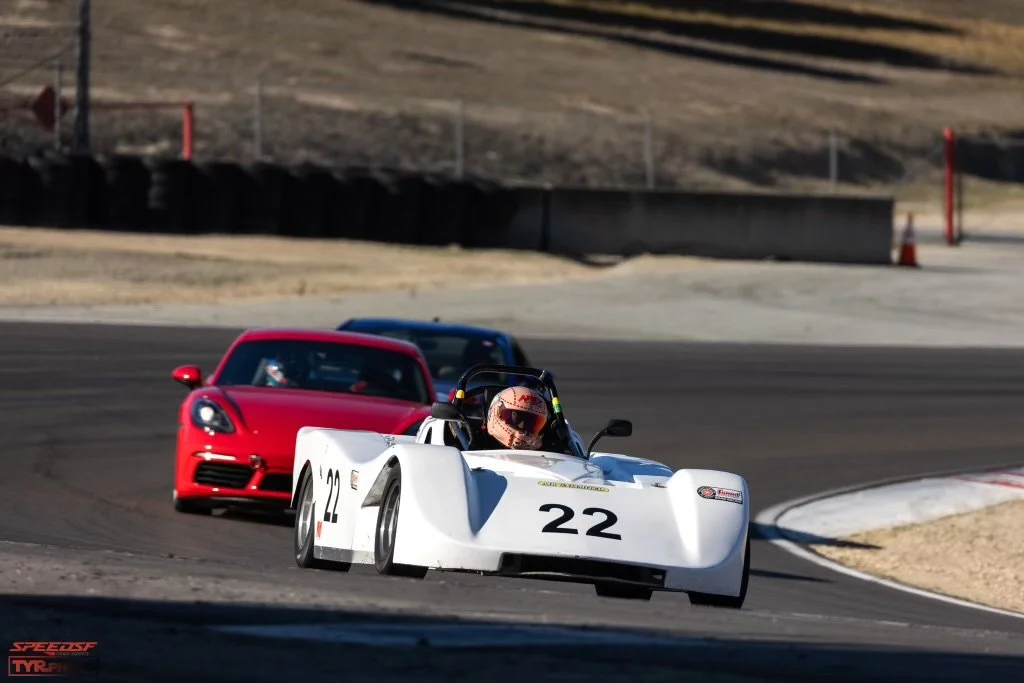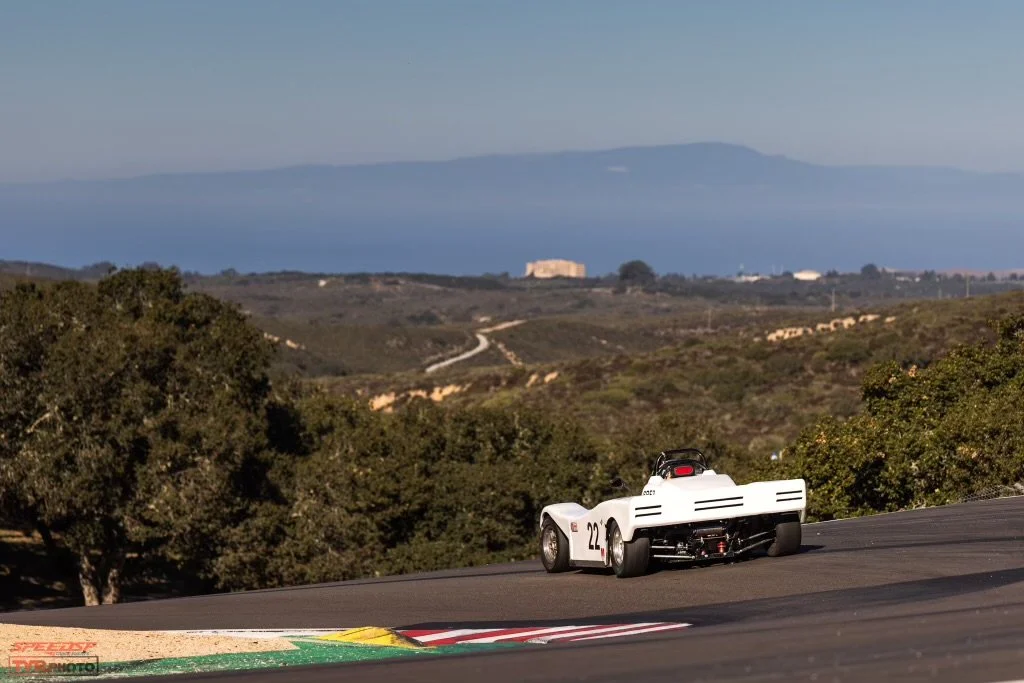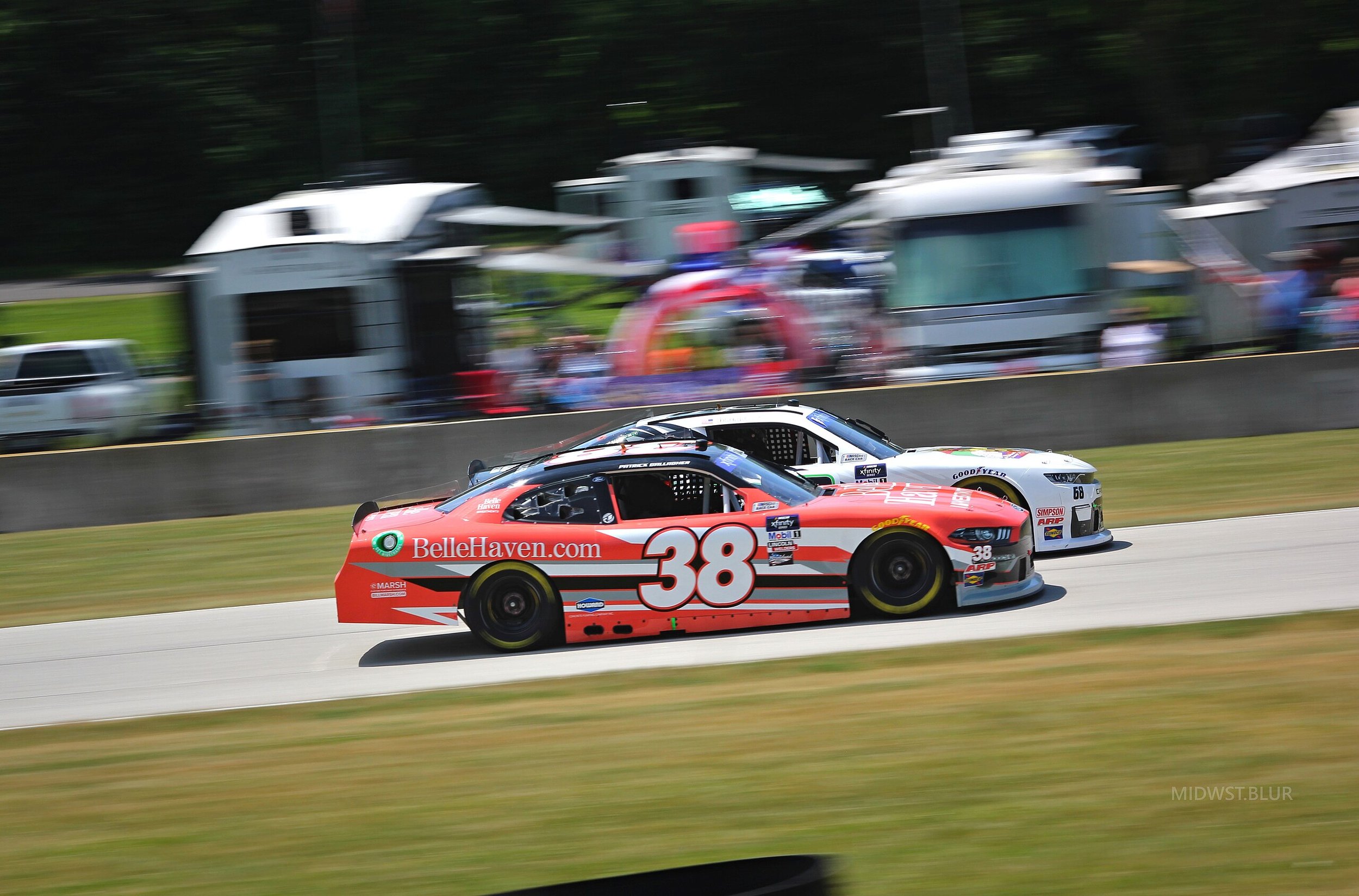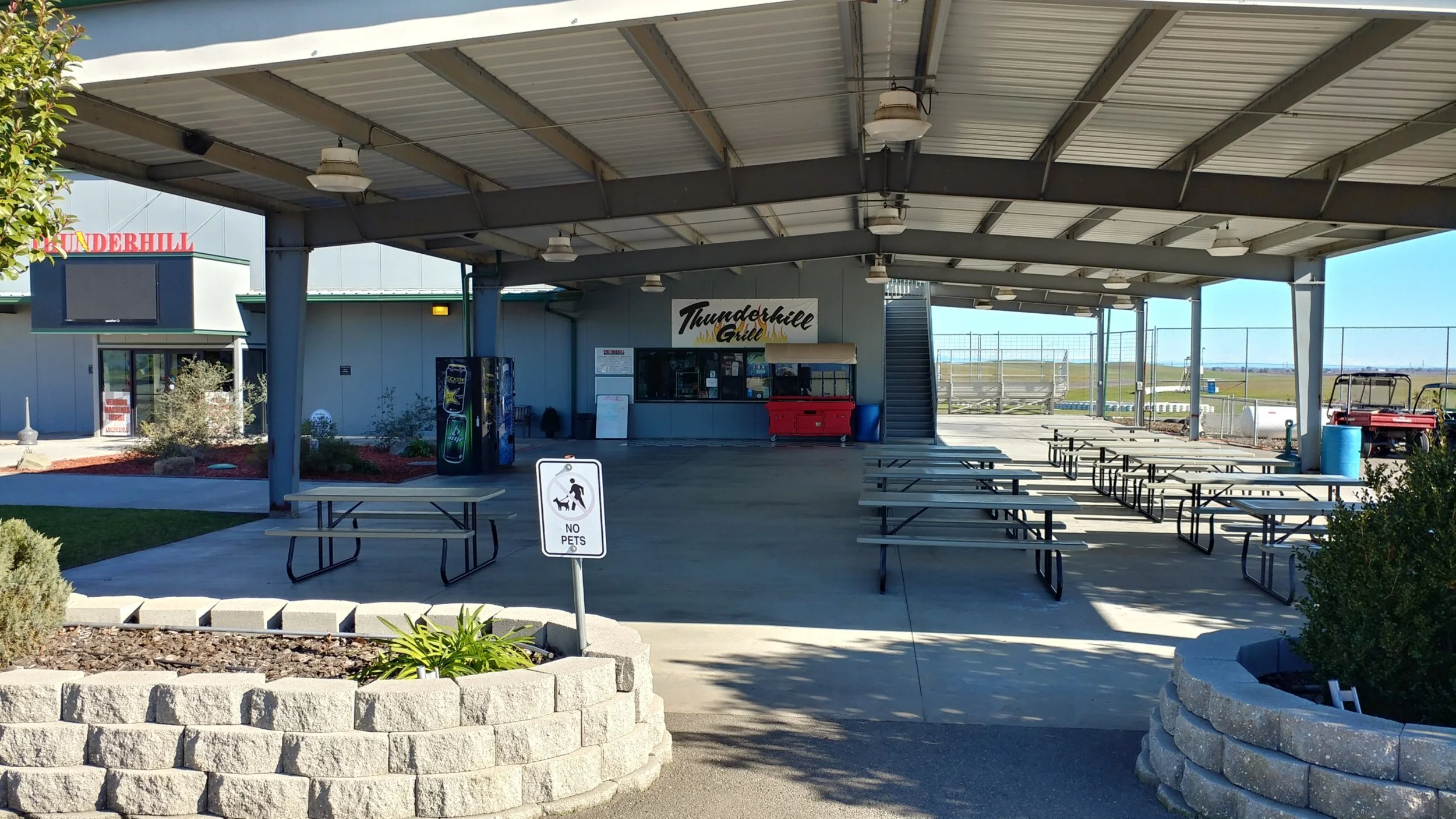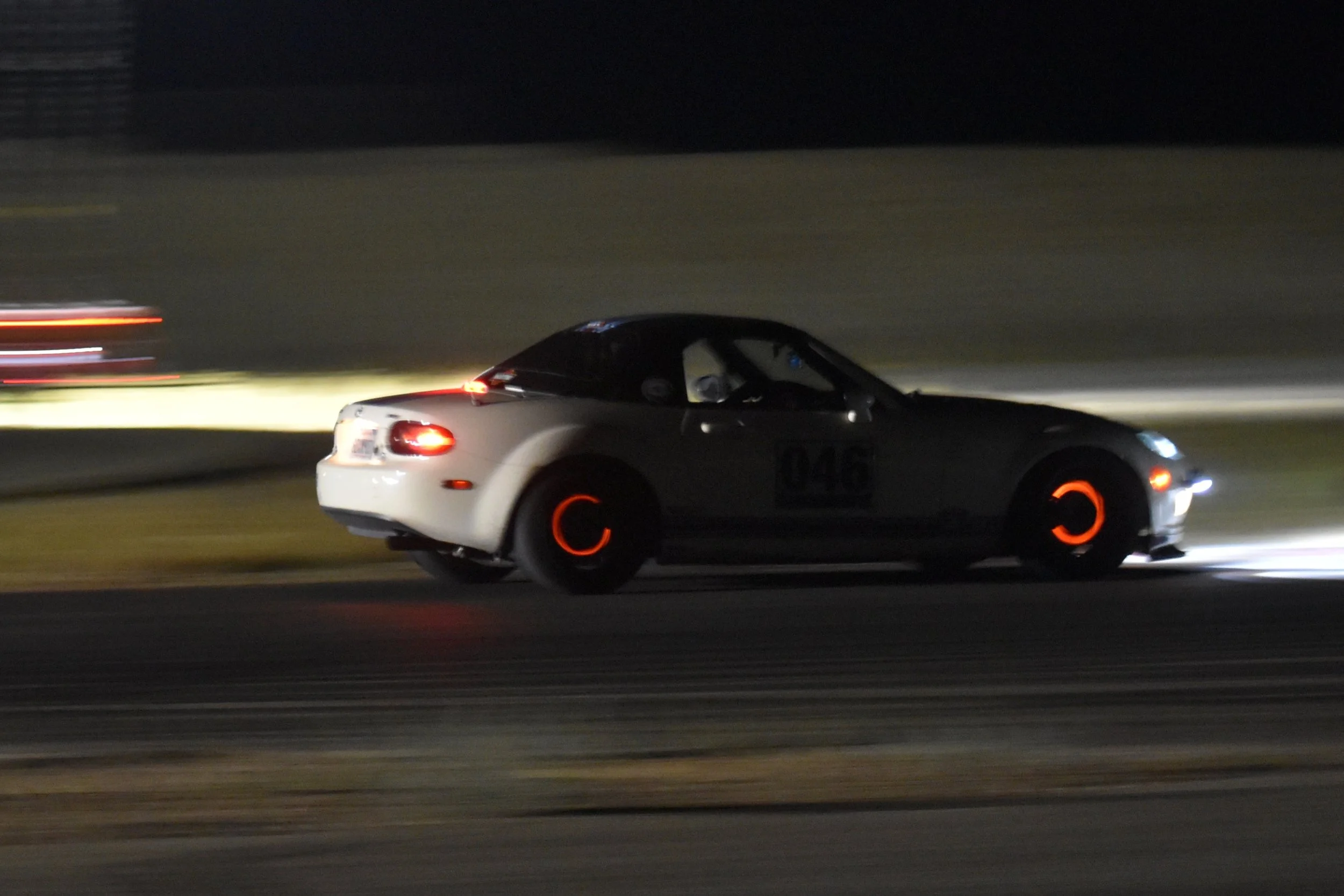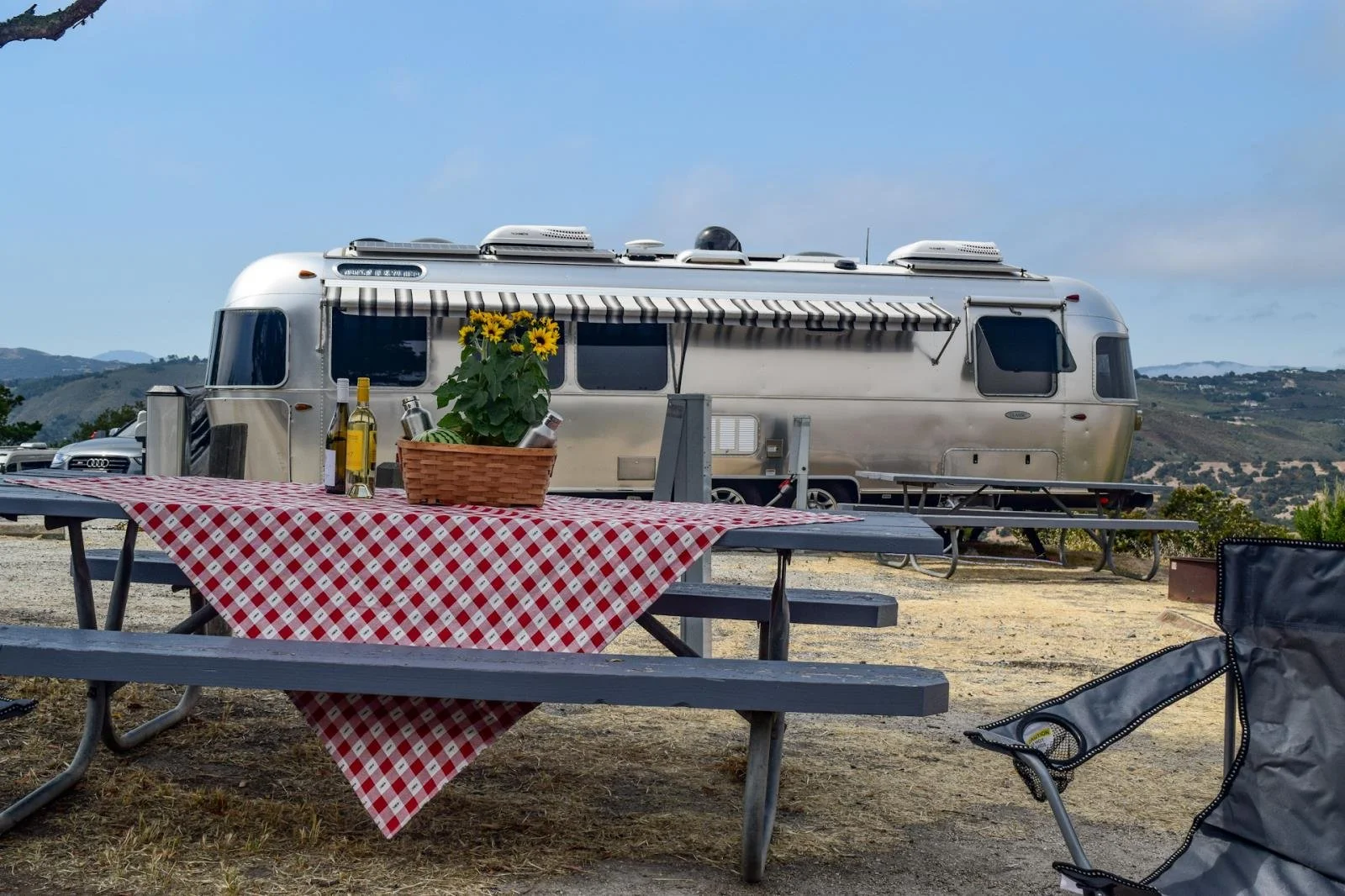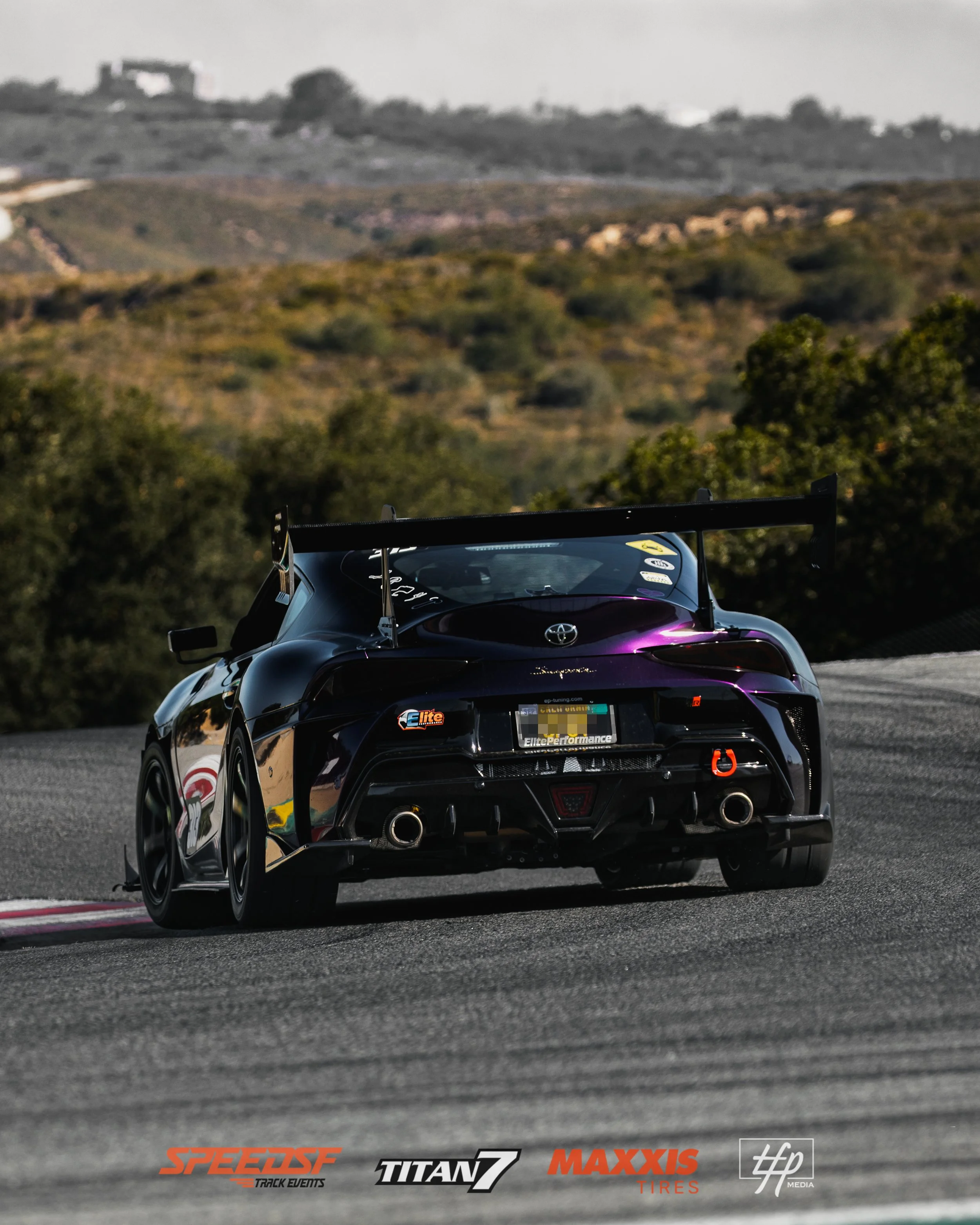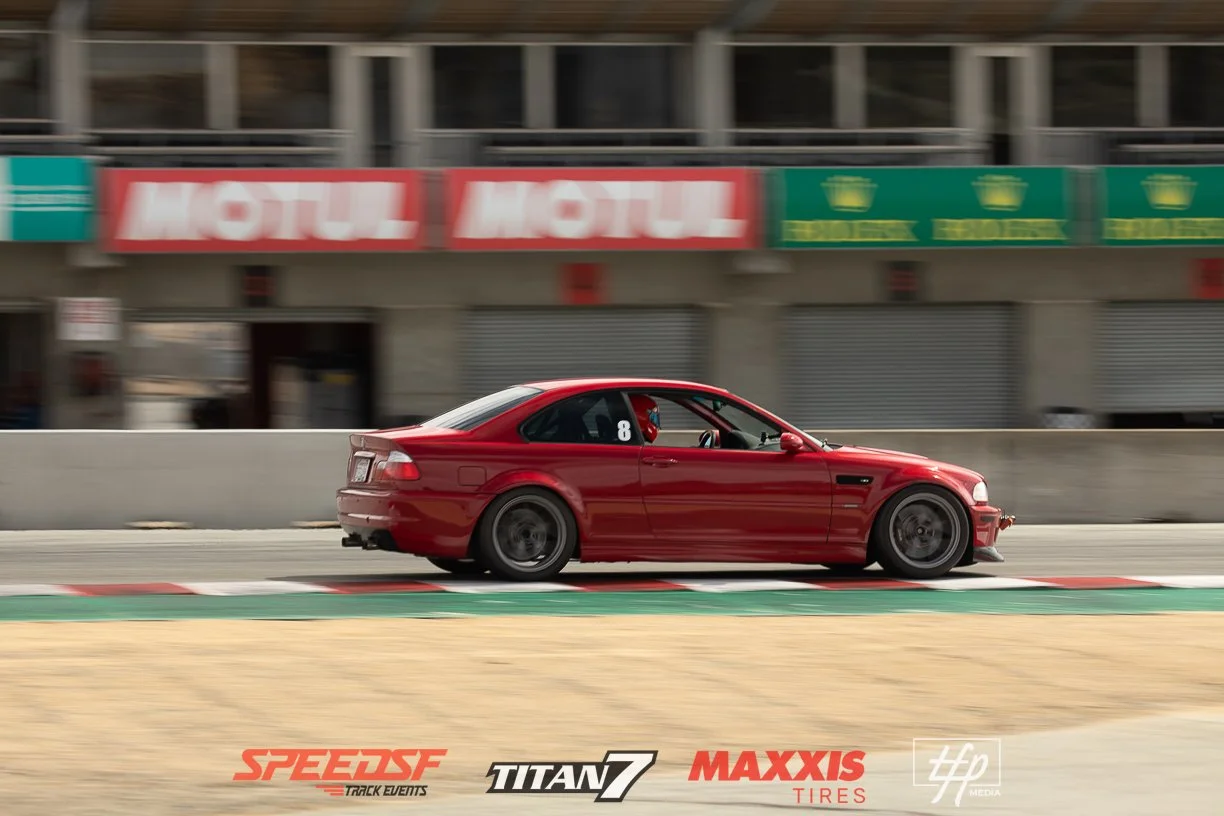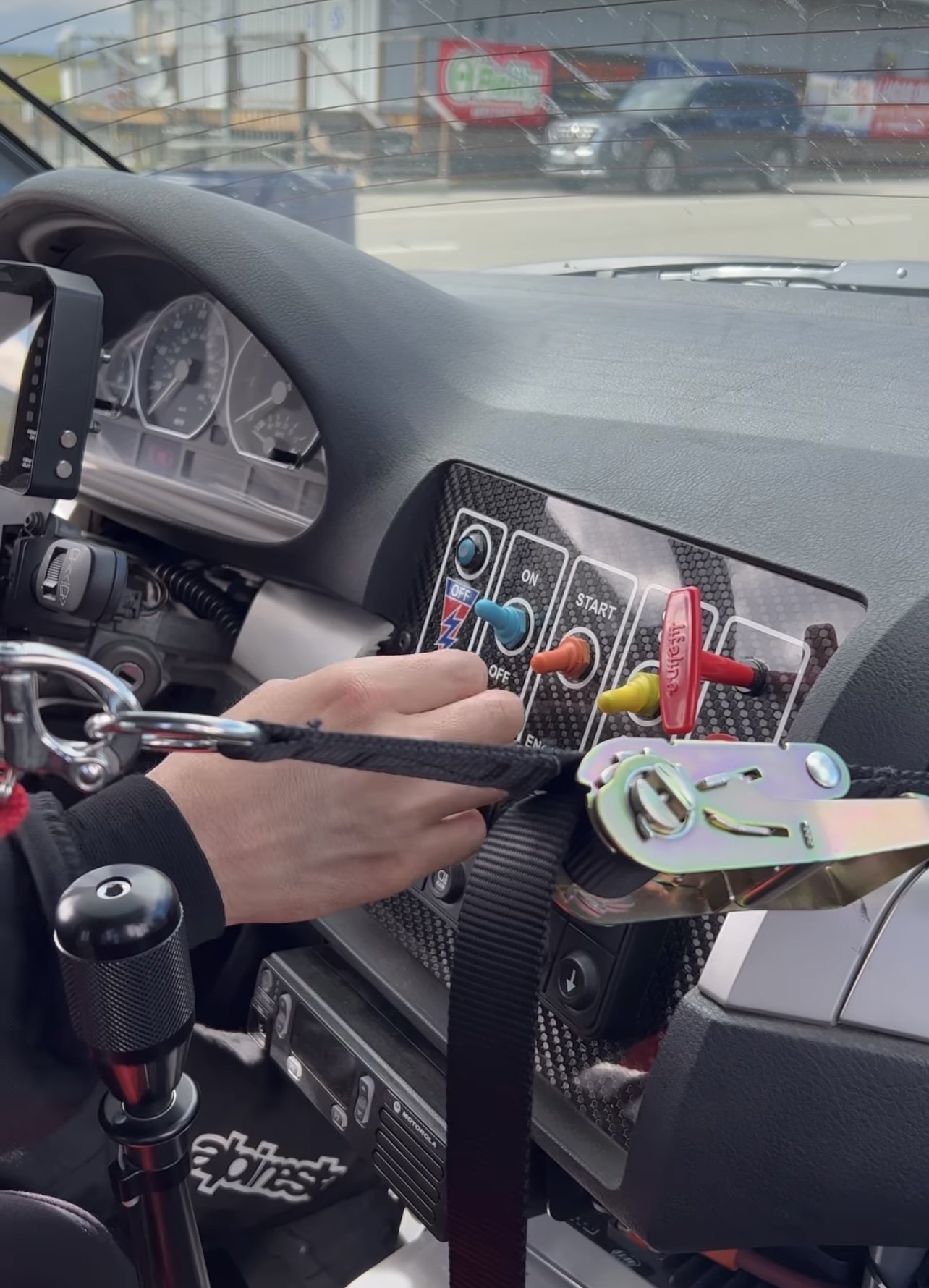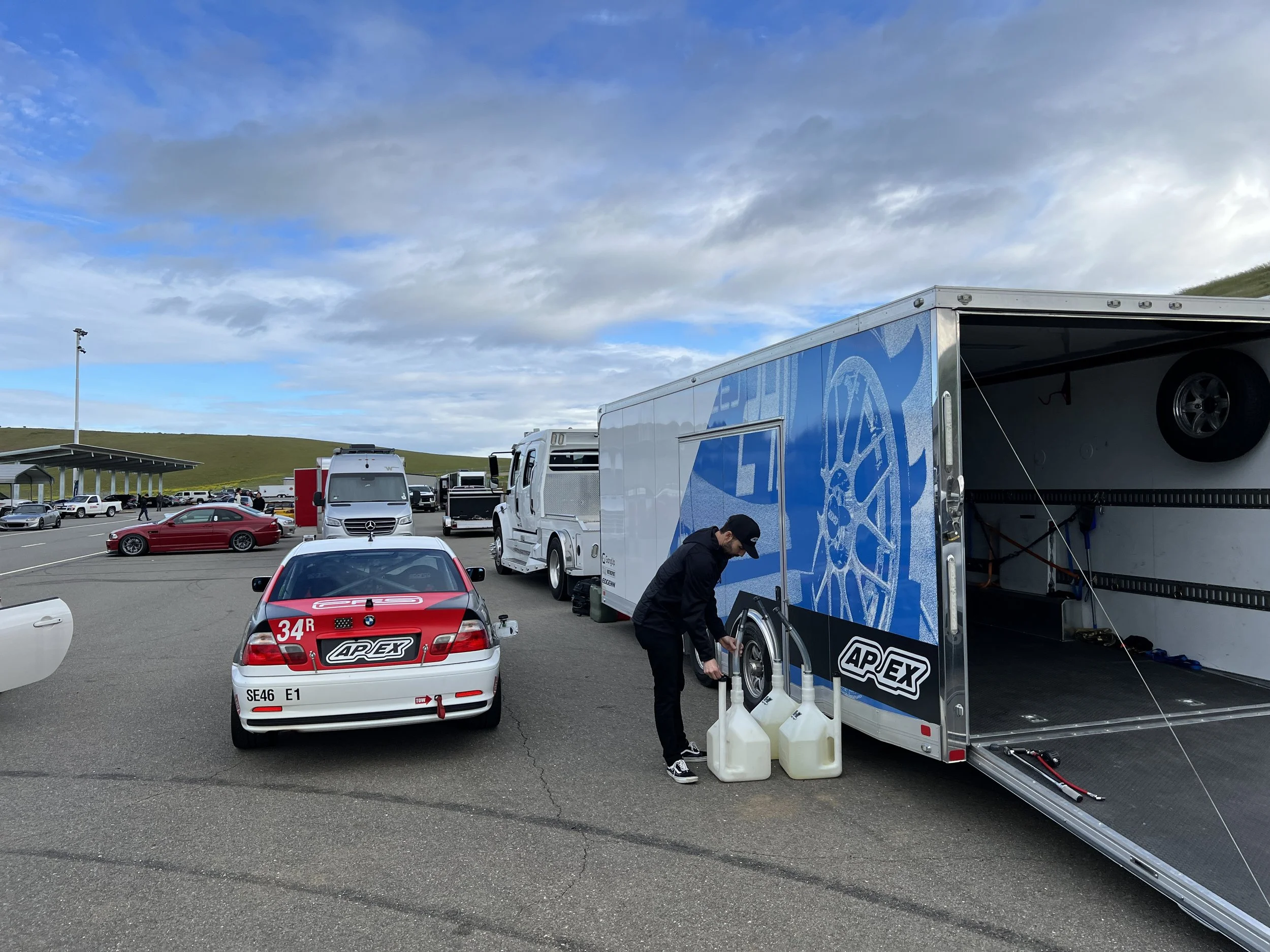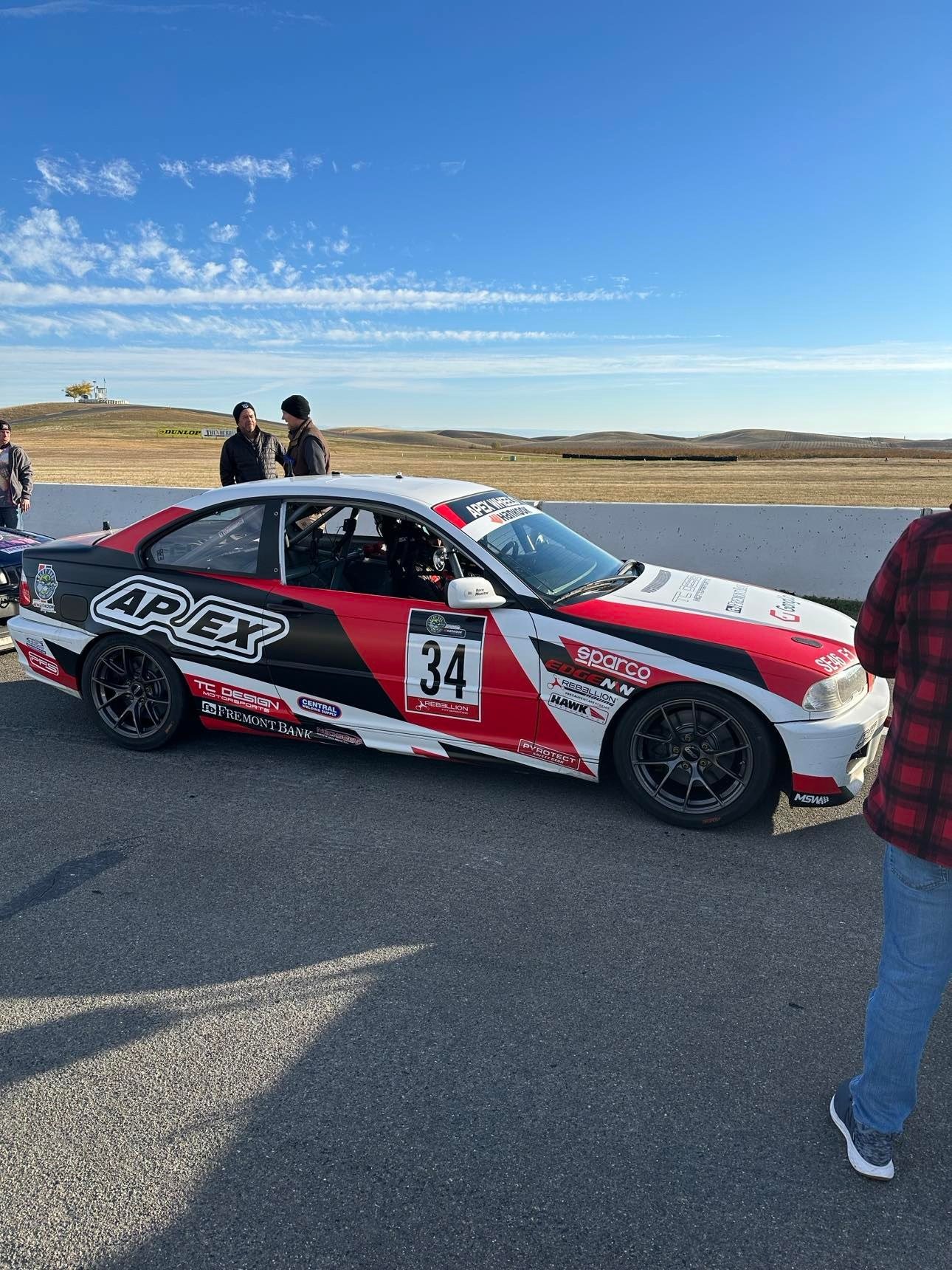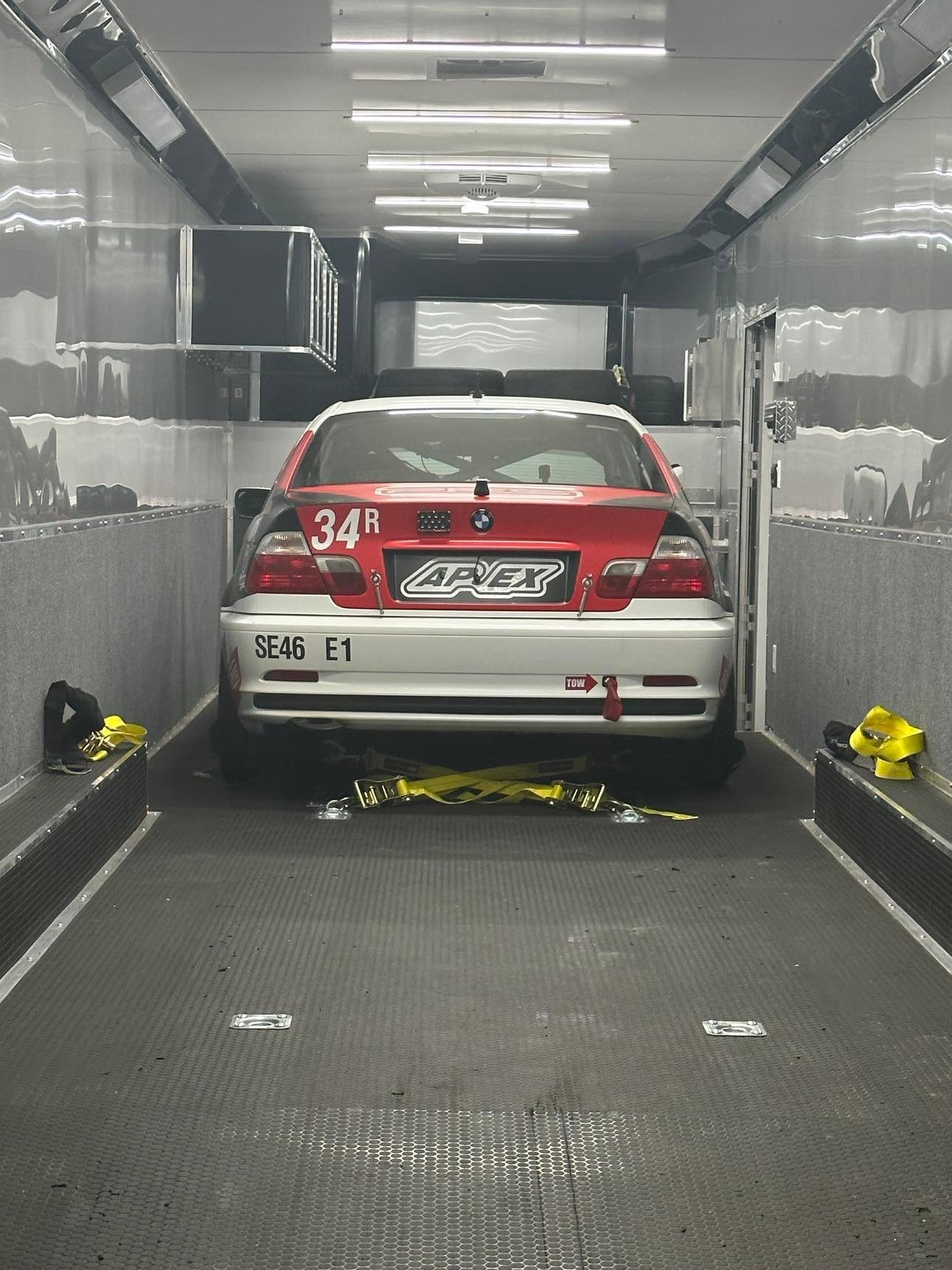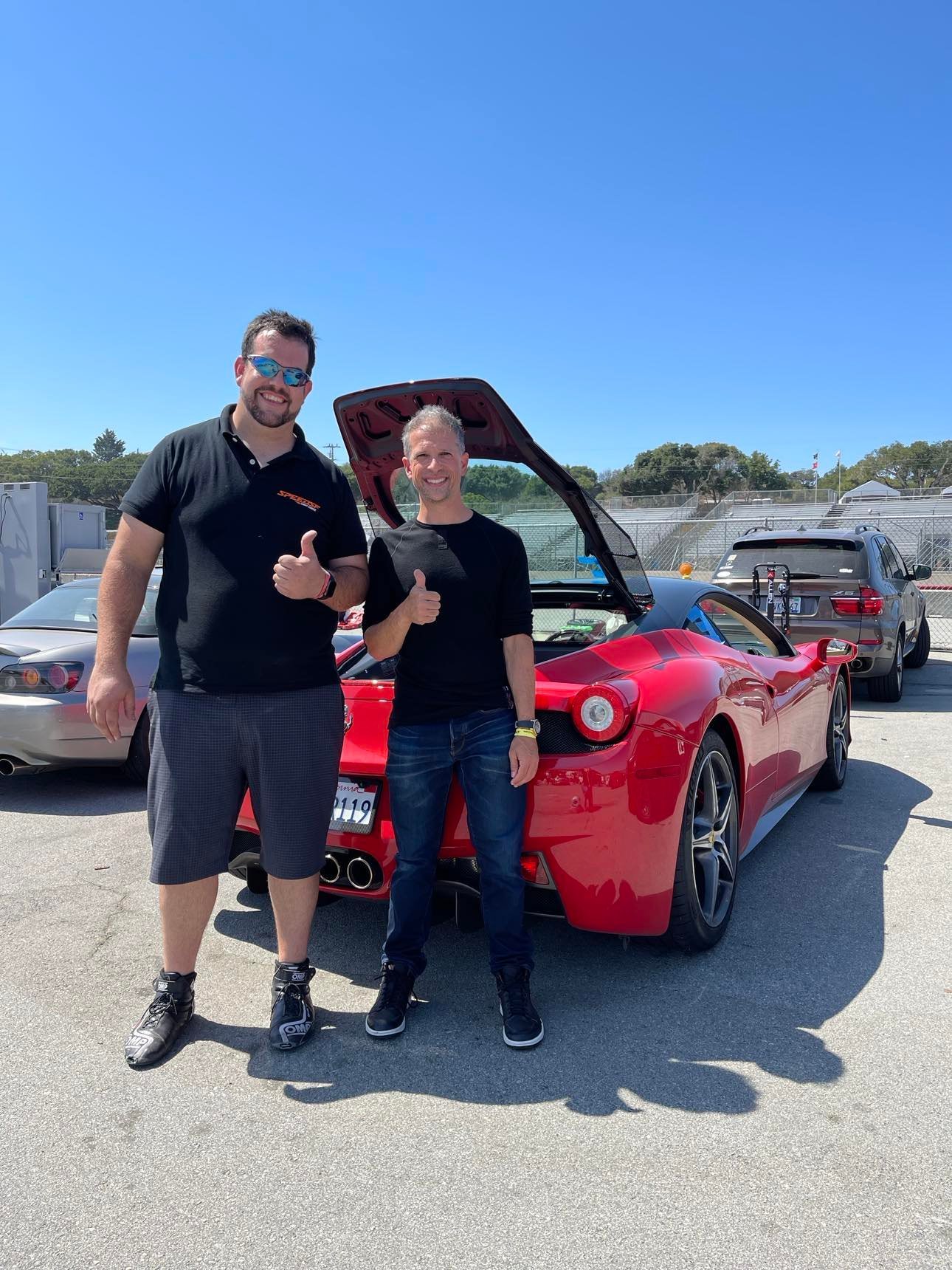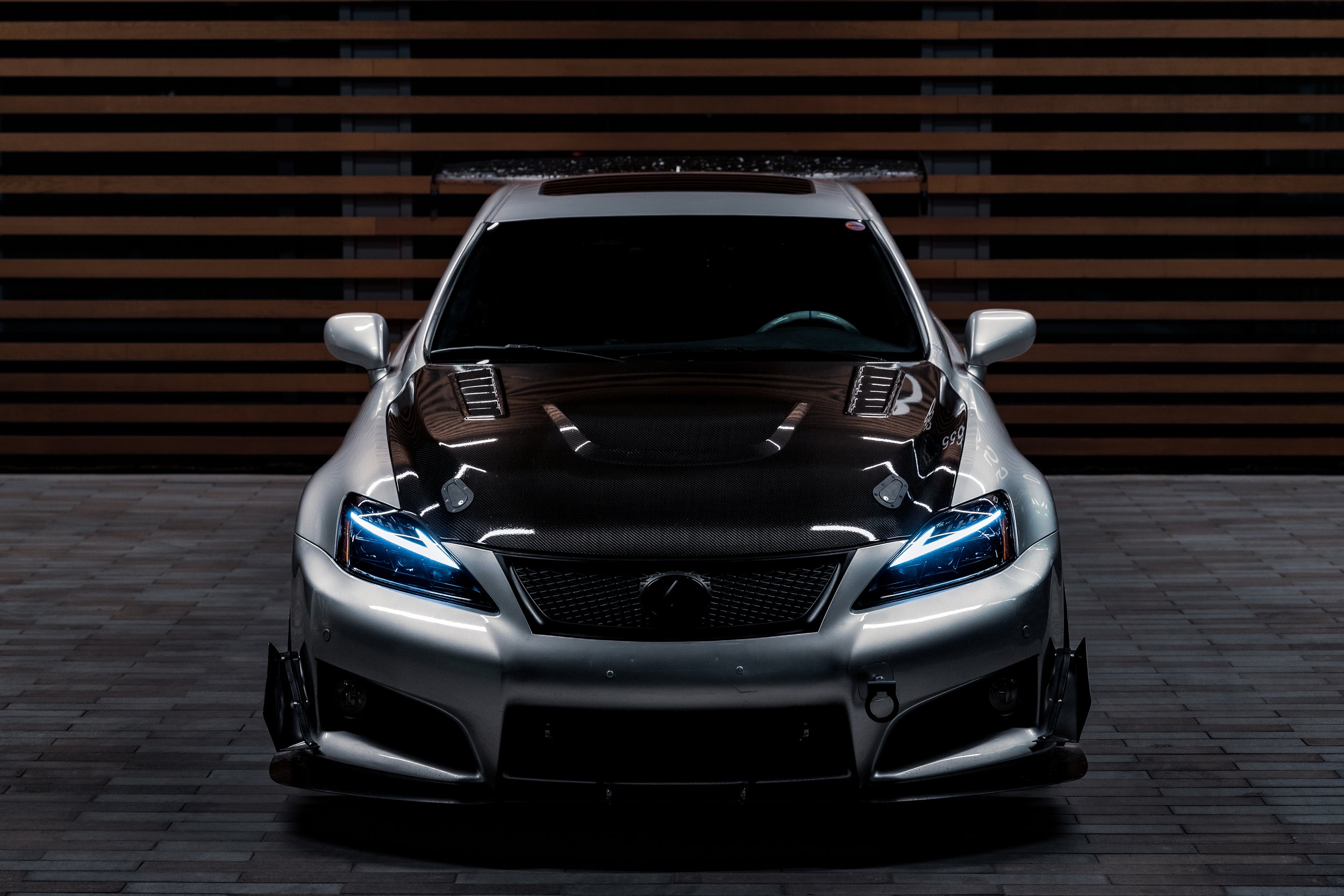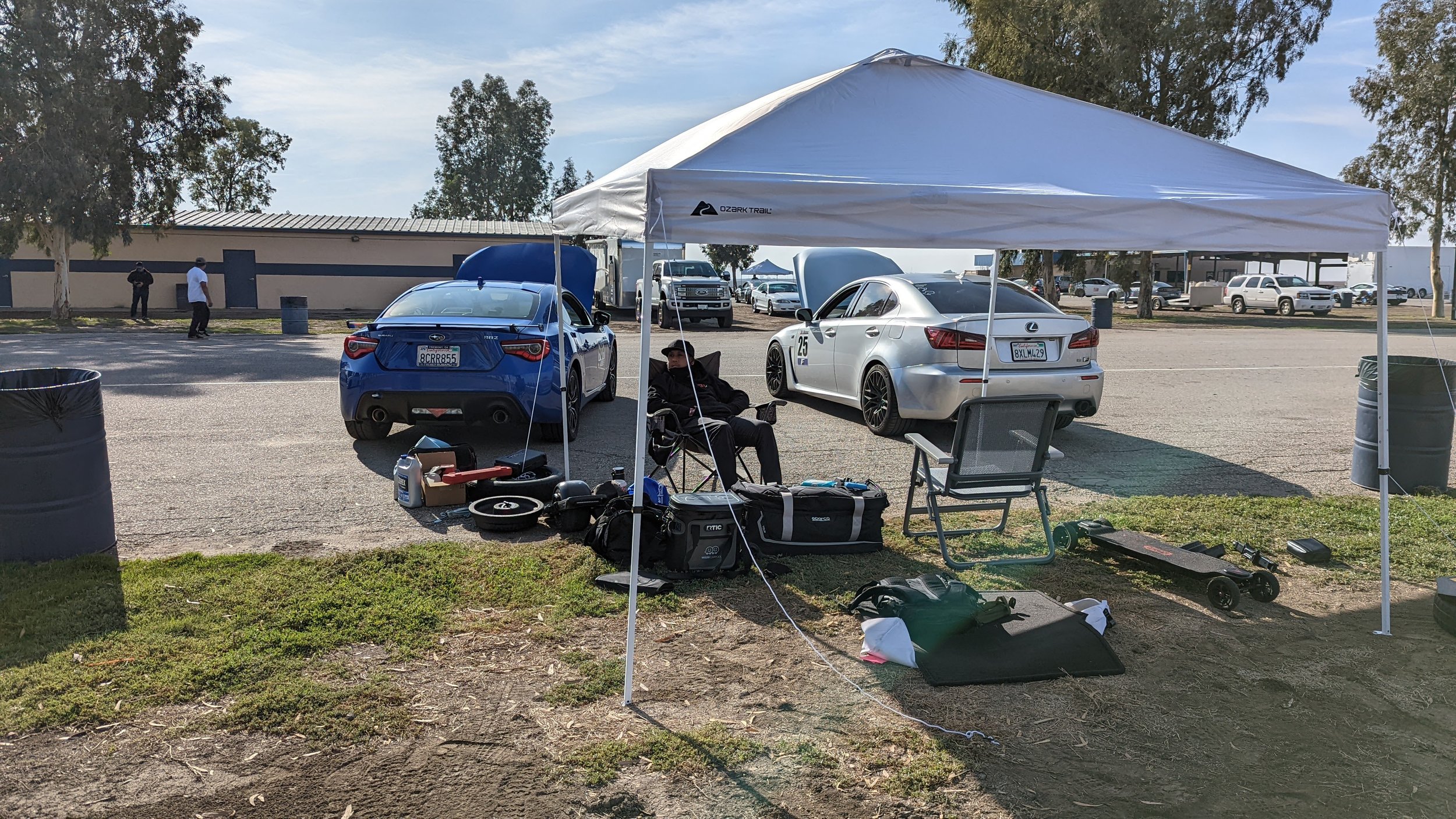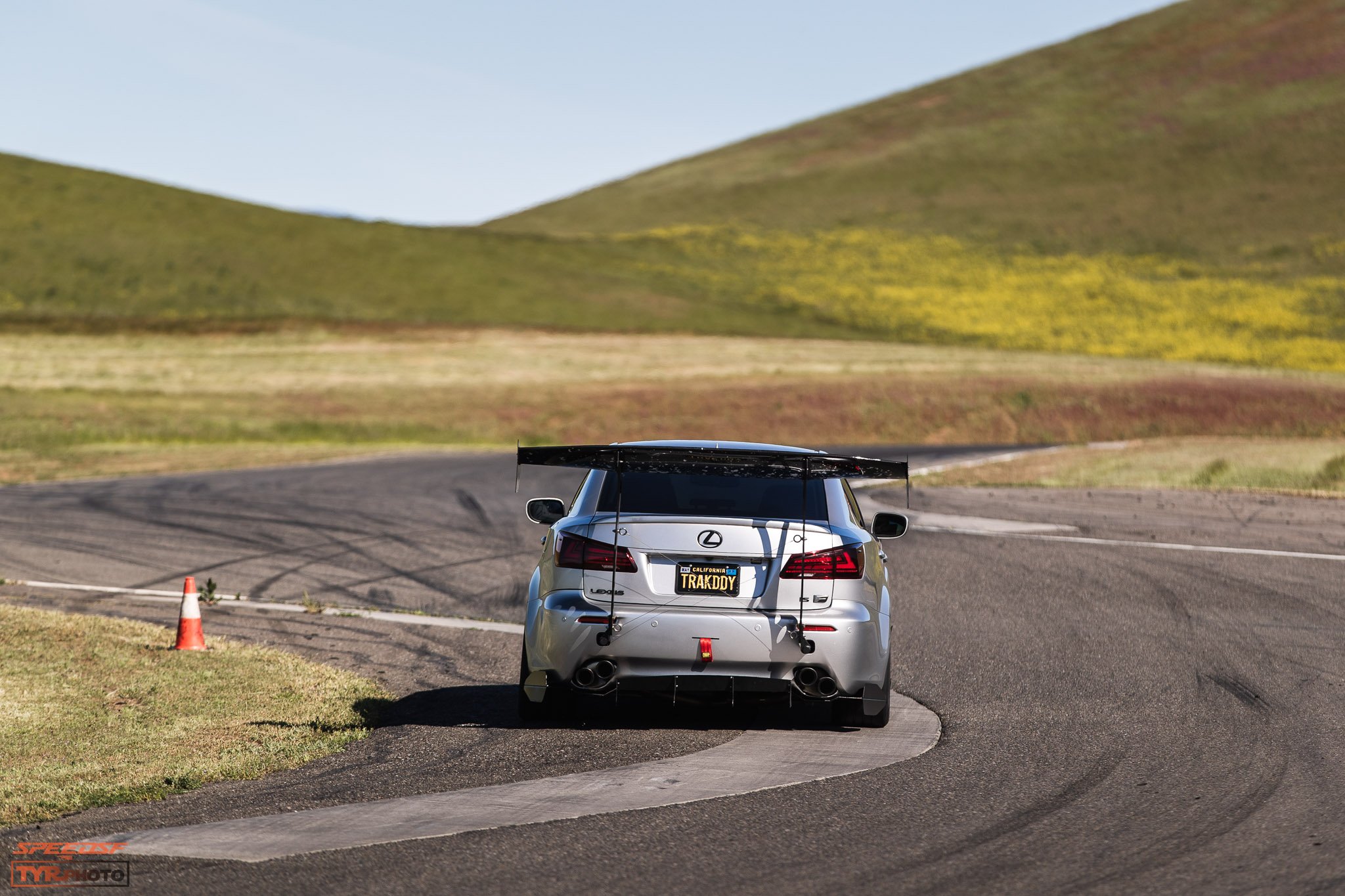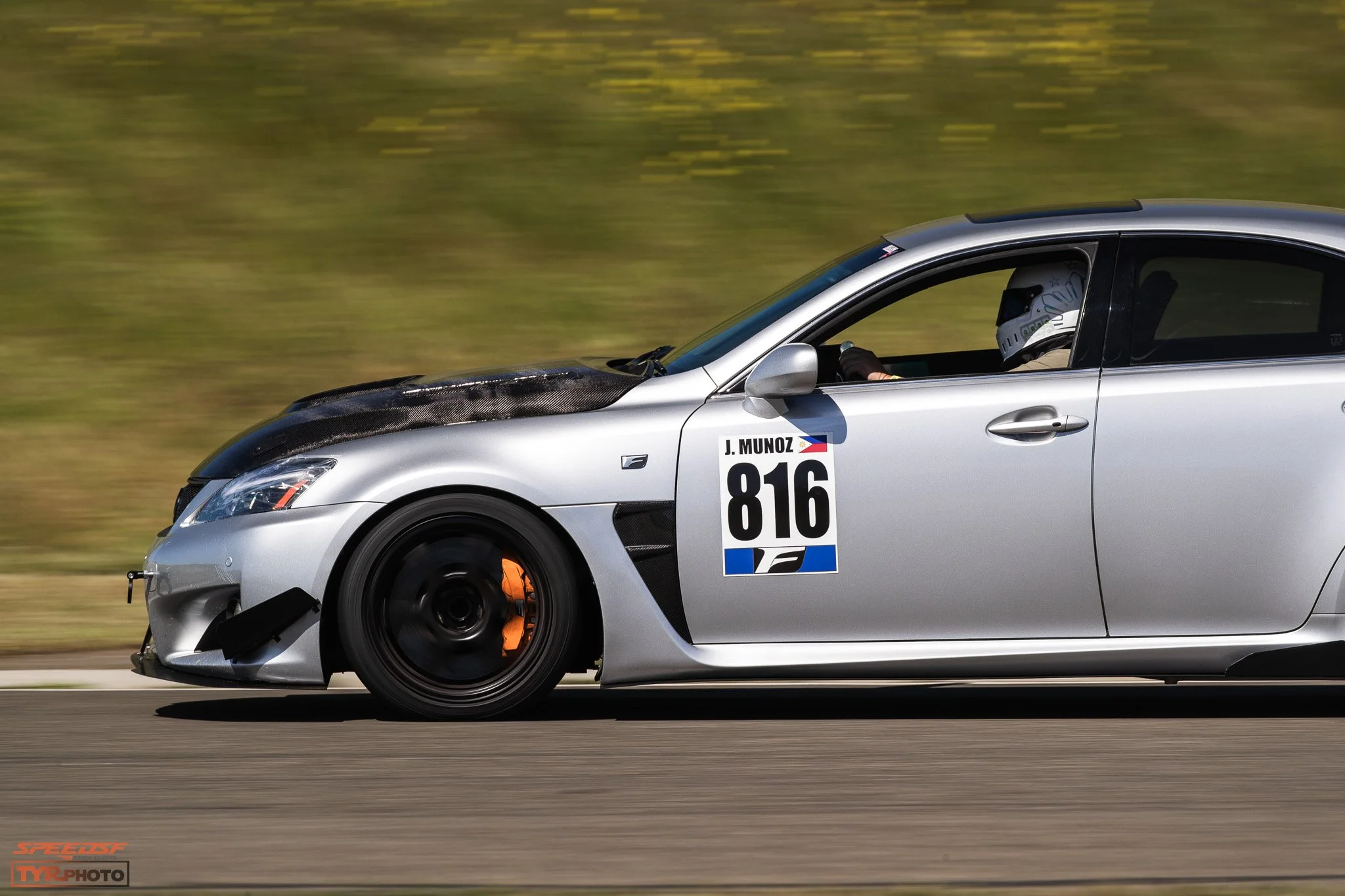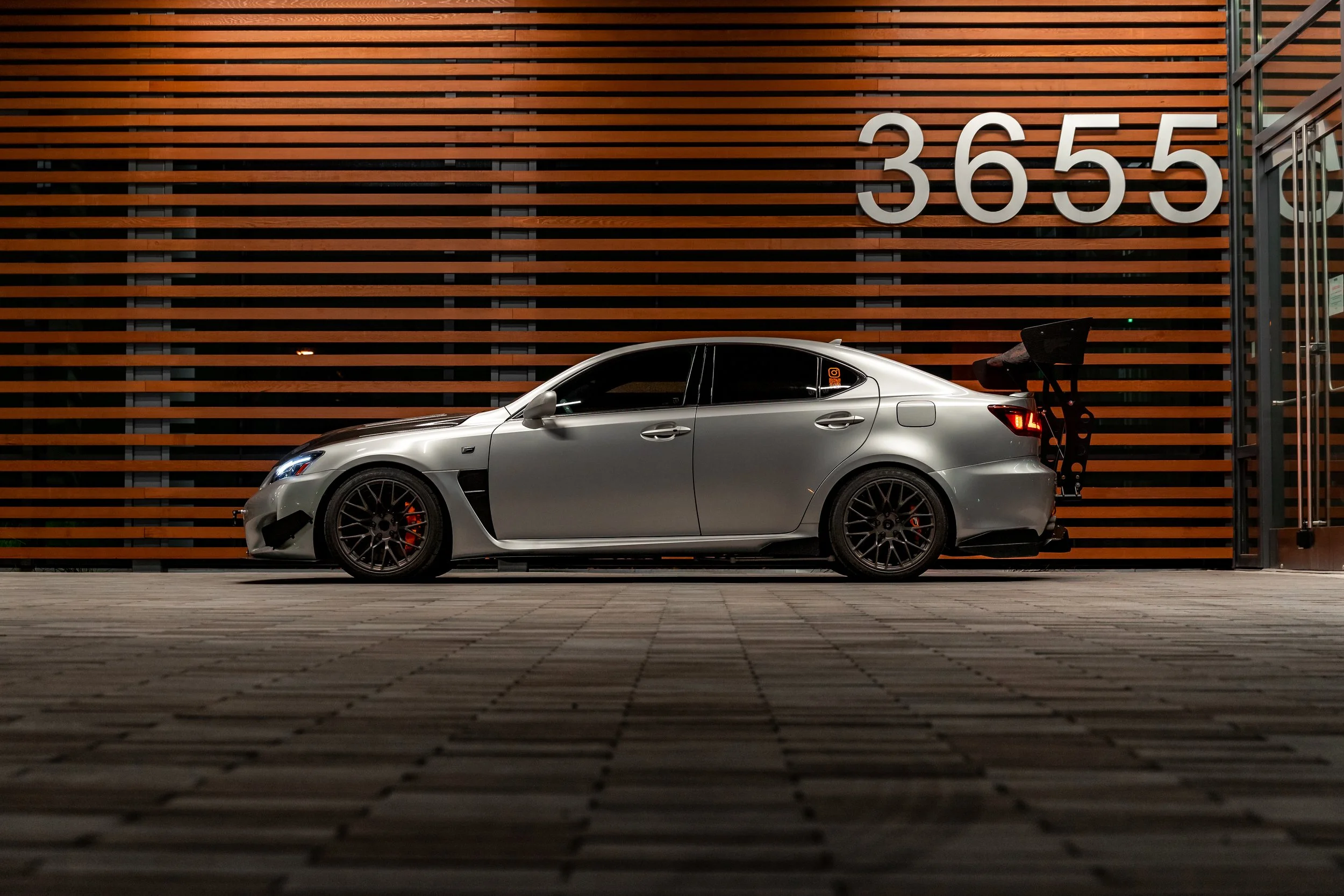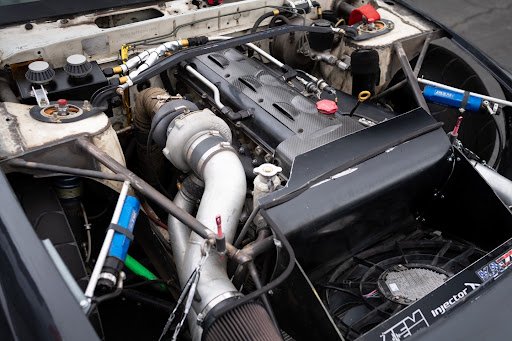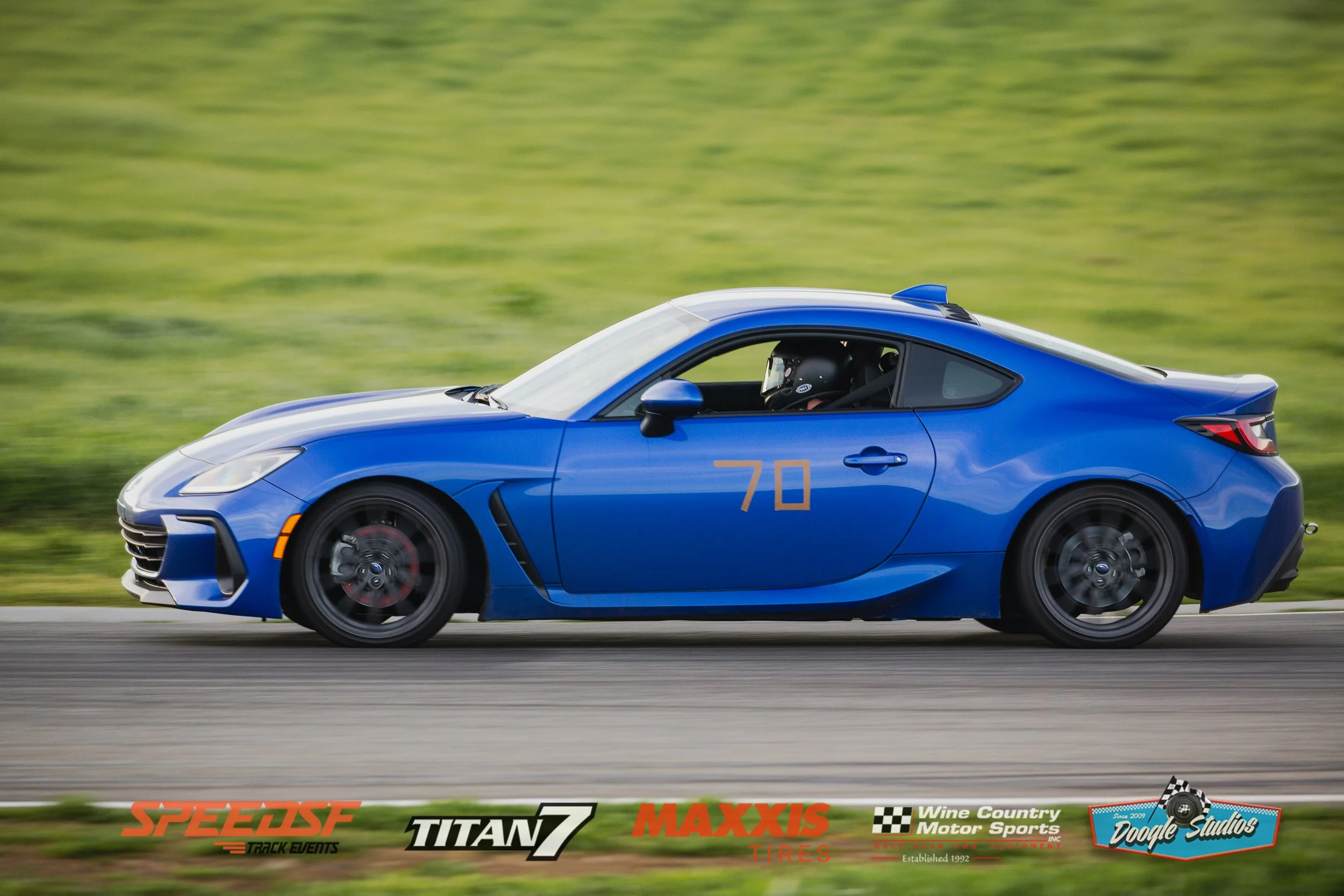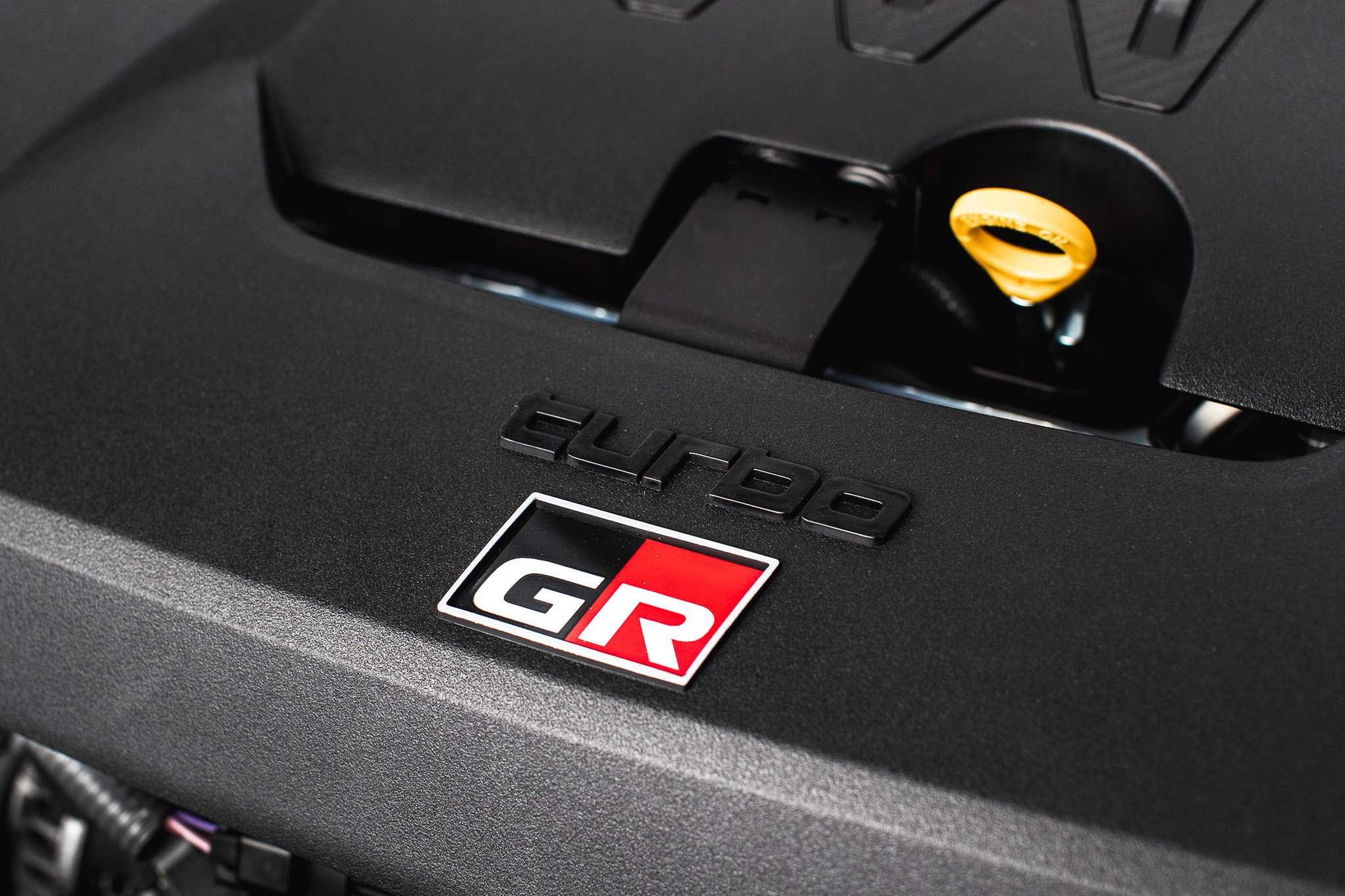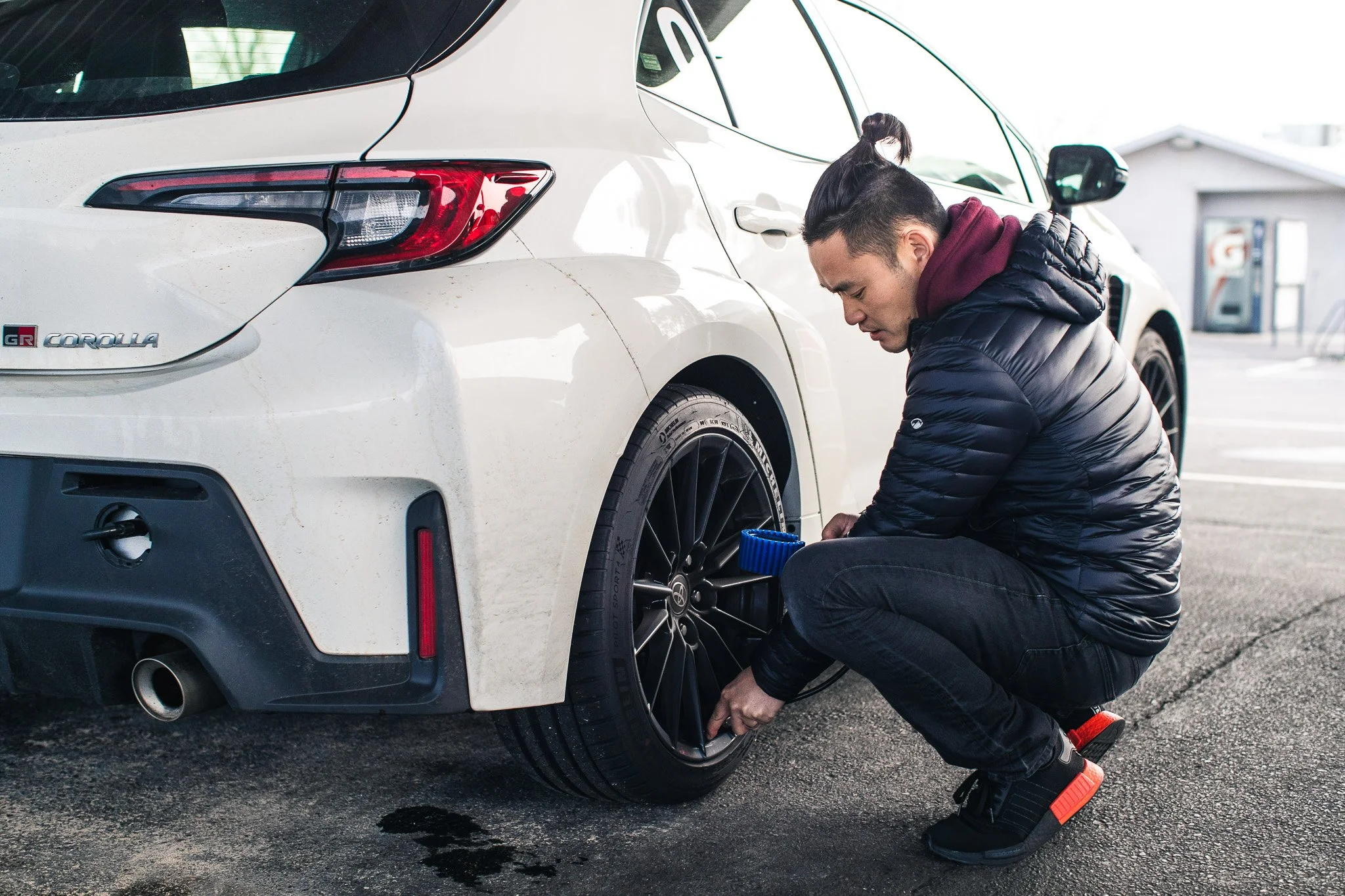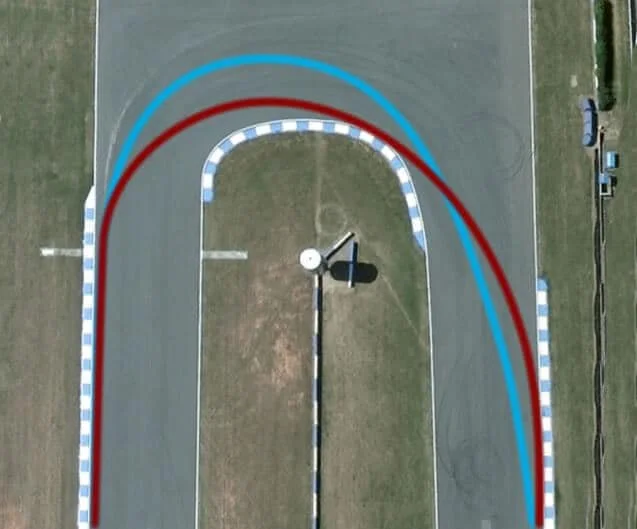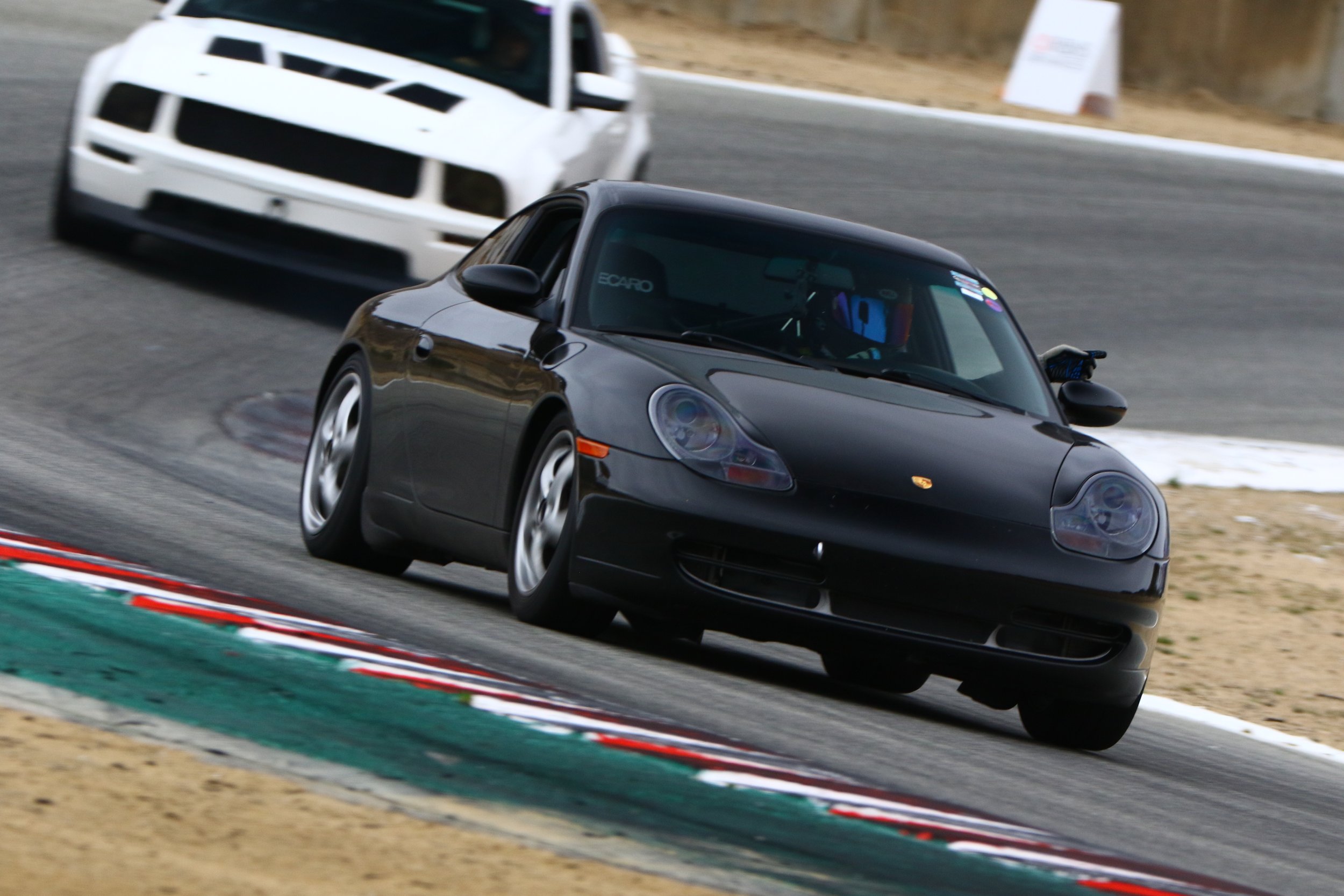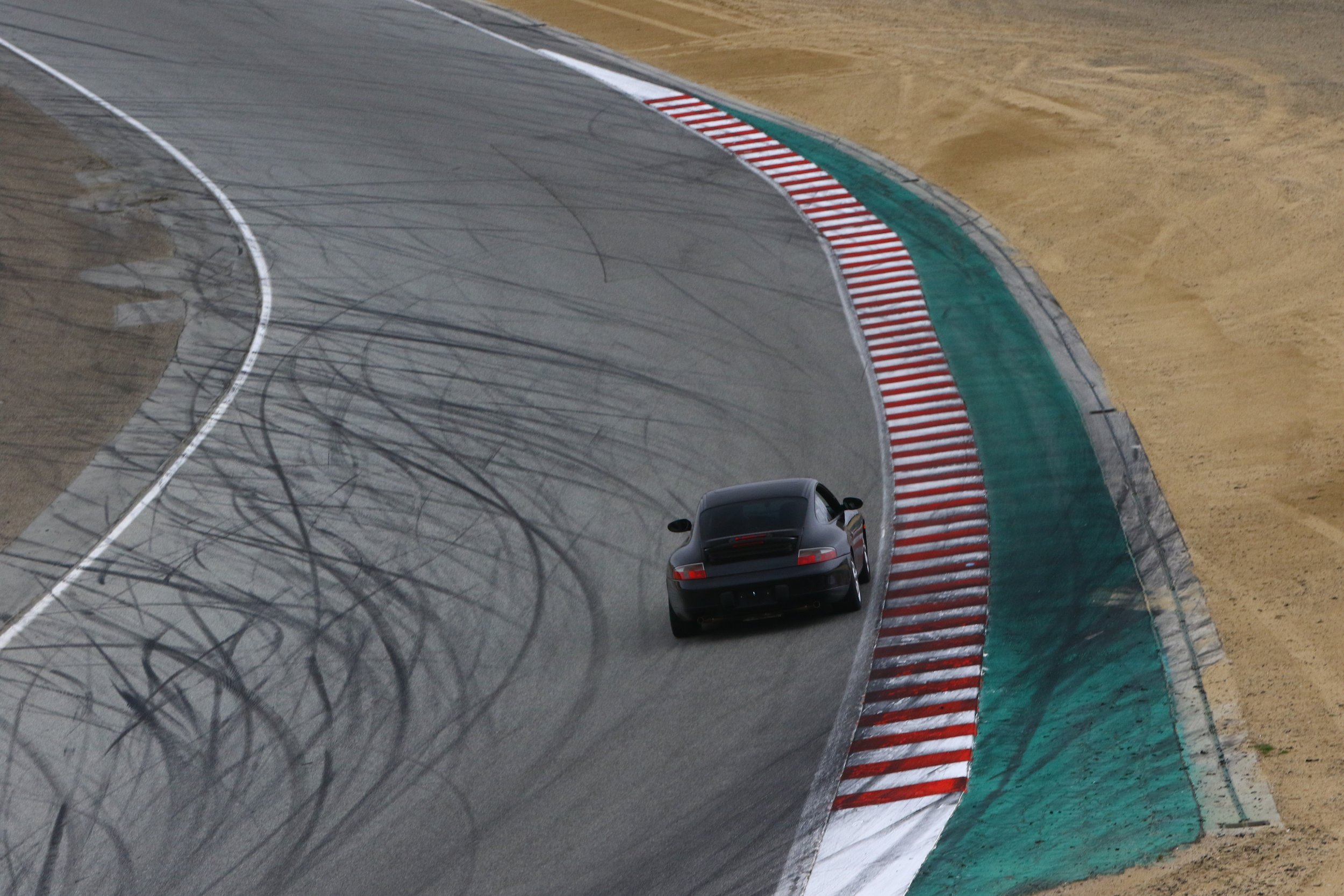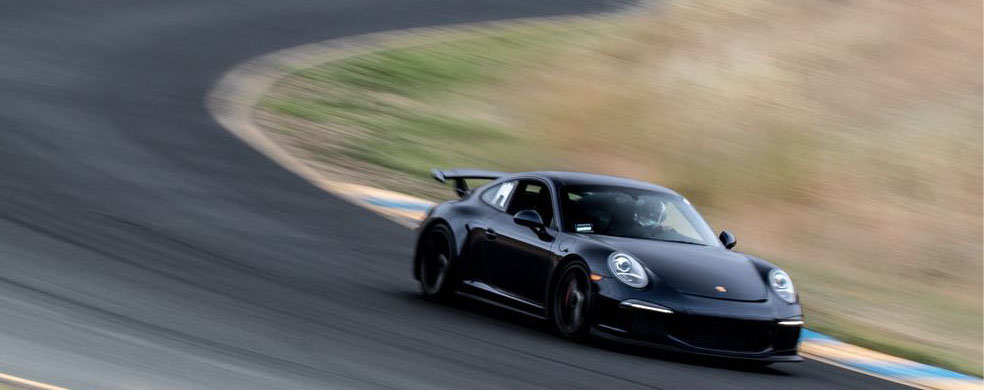
Max’s Spec Racer Ford: Lose The Ego
After cutting his teeth in a Porsche, Max got an inkling that going to a lighter, cheaper, more expendable device might expedite his improvement as a driver and budding racer.
After Max Gokhman signed for his 2006 Cayman, his dealer insisted that he take the car to the track. “You won’t be able to fully appreciate it if you don’t,” he said. Max was hesitant — the thought of balling up his brand new Porsche terrified him, but, at the same time, he sensed the man knew what he was talking about.
Max continued to mull over the prospect of tracking his new toy, but his dealer was adamant — so much so he offered to pay Max’s entry fee. That was all Max needed to make a decision. The next weekend, he took the Cayman to Infineon Raceway and began a love affair that never tested his patience. No crashes, no major repairs, and a relatively straightforward relationship with his parts suppliers made his first few years in grassroots motorsports a breeze.
Soft Ascent
After becoming the 2014 PCA Autocross Class Champion and multiple podium-sitter in various Southern California time attack series, he sold the 987 and moved into a 2014 981 Cayman. This time, however, he wasn’t as eager to modify the car. He’d come to understand the practical shortcomings of a track-oriented car and felt he might get more from the ownership experience if he was to leave the car mostly stock.
It was around then that one of his track buddies enticed him into wheel-to-wheel racing. This would entail buying a race-only machine. Truth be told, he had considered it for some time, but the thought of wadding up a Porsche racing car turned his stomach. Even getting on track in one would be prohibitively expensive, so he explored the cheaper options available to him.
He could drive a Spec Miata for a reasonable price, but he wanted something a little different. “I was looking for a mid-engined, purpose-built platform, and — and this is subjective — something a little more interesting than a Miata,” he explained.
He loved the idea of running a “spec” car: something that encouraged close competition through mechanical parity. What about something with the same power of a Miata, but in a car which weighs one thousand pounds less? The tried-and-true Spec Racer Ford, a staple of grassroots motorsport for the last fifty years, caught his eye. Mid-engine, open-top, closed-wheel, and very cost-effective; there was a lot to like about this diminutive, bare-bones racer.
Barest Bones
The tube-frame chassis has a 1.6-liter engine from a Ford Focus sitting transverse behind the driver. These sealed engines produce 135 horsepower, and are fairly inexpensive to replace when they go bang — though this rarely happens. The emphasis here is on reliability, low running costs, and complete driving immersion.
When Max first tested the car at Laguna Seca, he was setting competitive times by the end of the day.
The sense of occasion is something that can’t be underestimated with an open-top car like this. Not only is the visibility fantastic, but getting your helmet buffeted by the wind makes driving at seventy feel like a hundred and twenty. The information relayed by the car is detailed and constant; it’s easy to feel a locked tire or growing understeer through the steering, which is remarkably sharp. “Feedback is crystal clear,” he adds.
Sitting in the middle of the chassis and knowing exactly where your front wheels are at all times inspires confidence to get real intimate with other racers when going three-wide into a turn - truly what wheel-to-wheel is about.
Some might suspect that a car this visceral and direct would come with sharp edges. In reality, it is predictable and communicative, and, as it has much more grip than power, it’s quite easy to find its limits. When it does slide, it’s fairly progressive — more so than the Cayman; nearly 300 horsepower would cause a few dicey situations when passing in a late-apex turn. Some of this is due to a compliant suspension setup, and some of it is due to the Hoosier slick made specifically for the SRF. Incidentally, it isn’t the most expensive tire. Low weight and low power help lengthen its lifespan, too.
The sequential transmission by Sadev, standard in third-gen SRFs, is another racecar element that Max learned to appreciate. Unlike an H-pattern, which is lovely for canyon drives but saps attention from racecraft; or a PDK, which is clinically precise yet fragile on cars that were built for the street; the SRF gearbox lets you bang out shifts while bouncing off the rev-limiter with abandon.
Perspective Shift
Max admits that, while the Spec Racer Ford is the more engaging car to drive, he doesn’t have the same sentimental attachment to it as he had to his Cayman. “I save the sweet feelings for my Porsche. This is a tool to help me grow as a racer. I compare the distinction between the two to owning a pet versus owning livestock.”
And with the reasonable running costs, packed fields, low power, and full calendars, he’s looking to become a competitive amateur racer as he gets up to speed on the Spec Racer Ford platform, with the help of his team Accel Racetek.
“Once I got competitive with this hobby, I learned that money spent on coaching would make me a lot faster than aero, suspension, or other bits of kit. To me, some of those seem most like things to flex over. With Perry and Travis of Accel Racetek, I not only know that the car will be ready for the next race no matter what tomfoolery I get up to on track, but that they’ll keep nudging me to be a better driver.”
Ultimately, the moral here is that with racing, as with any other passion, dropping your ego — such as by going from a venerable Porsche to a humble Spec Racer Ford — may prove to be the path to success, paved with smiles.
Passing Etiquette: Making Space and Saving Face
Passing and braking are the last two things a driver learns to do well. We’ve broken down a series of basic rules to follow to help learn how to make the pass stick and how to do so safely.
Photos (unless specified otherwise): Trevor Ryan
Overtaking is a tricky business, and learning how to pass decisively and safely takes time and practice. It pays to err on the side of caution — especially with unknown drivers. After all, squabbling for position isn’t the most judicious thing to do when there’s no prize on the line. Nobody wins a track day.
As a general rule in racing, the overtaker must present themselves alongside the driver in front — typically with the overtaking driver’s front wheels ahead of the overtaken driver’s rears before the turn-in point. This way, they’re able to see the other driver through their peripheral vision. Studying one’s surroundings and knowing where other cars are at all times is necessary to become a capable track driver.
It pays to be seen. Credit: CC-by-2.0/MIDWST.BLUR
Of course, this is a rule followed in wheel-to-wheel racing. With Speed SF, the passing car must have its front wheels in-line with the passed car’s front wheel before the beginning of the braking zone if they want to attempt a pass. It’s worth giving everyone a little more room since nobody can truly win at a track day, after all.
Our aim is to give all our drivers their own space and help the faster drivers safely navigate the slower traffic so nobody gets held up.
To give assertive advanced drivers the leeway to pass freely while allowing novices time and safety to ease their way into it, we have outlined some hard and fast rules for our various run groups. For those groups with stricter passing rules, like Green and Blue, the process of passing is made as simple as possible.
Novice Group (Green)
Responsible novices dedicate most of their mental energy to driving their own car, so they likely lack the bandwidth to watch their mirrors while driving. For this reason, we only allow passing on the designated straightaways — never through the middle of a corner — to simplify the mental burden. The courteous driver being passed should lift off the throttle to make life easier for the passing driver. This really helps when overtaking in a Miata.
When the driver being passed decides to lift off their throttle, they give the passing driver more room to complete this overtake prior to the braking zone, which is our second requirement. The passing driver should not be pressured into squeezing themselves down the inside at the turn-in point. Just because someone, especially a novice, gives the point by does not mean that a pass is possible; the passing driver must carefully judge whether it is going to work. If it’s doubtful the pass can’t work, back off — nobody wins a track day.
Keep an eye out for that point-by. Credit: OpenTrack
Generally speaking, we like the driver being passed to allow the passing driver to rejoin the conventional driving line before turning in. If they insist on turning into the corner from an inside line (ie. a line closer to the apex than the standard line), they must navigate a shorter radius and therefore reduce their entry speeds accordingly.
Because the novice’s situational awareness isn’t as great as a regular who instinctively checks their mirrors, we require the passing driver to wait for a specific gesture from the driver ahead. By leaning their left hand out the window (or right in a RHD car) and pointing at the portion of the track they’d prefer the overtaking driver to use while passing, they give a sign of recognition and avoid confusion. Wait for a clear signal, and preferably before a longish straightaway — it’s safest and easiest to pass there.
Intermediate Group (Blue)
Even with their experience, we want members of blue group to follow the same passing rules as the members of green.
HARD RULES: GREEN/BLUE
Point-by passing is required at all times. Under no circumstances is passing in the corners allowed, and passes along the straights must be completed before the braking zone.
Point-by Recommended/Mixed Group (Yellow):
After a dozen days or so, driving alongside others at a quick pace is no longer terrifying like it once was. We try to encourage these drivers to be assertive with their car placement so as to begin the two-part process of an advanced pass. Both parties must be aware of one another, and as long as there’s enough room to overtake safely, we allow passing without a hand signal. Though a point-by is still recommended to make sure everyone is aware, it isn’t required.
There are other ways to communicate reaching an arm outside the window. For instance, the driver being passed taps their rear-view mirror prior to the turn-in point (a common acknowledgement). This indicates that the driver attempting the pass is seen and will give way. The driver ahead can also offer a corner without signaling by slowing than necessary before turn-in, usually off the ideal line. If the driver behind sees the “door opening” and the driver ahead taking an odd line slowly into the corner, they will know they’ve been given a chance to pass.
When overtaking and turning in on a tighter line, remember more braking pressure (if braking is necessary) is likely required.
HARD RULES: YELLOW
The fundamental skill required to run in this group is strong situational awareness. Drivers are allowed to pass anywhere, but only at a moderate pace. Point-by passing is recommended, but not required. Exercise caution and make sure to read the driver ahead before attempting a pass.
Open Passing Group (Red + Gold):
Highly experienced drivers aren’t protected by such rules, which means they need to read the subtler signs of a driver giving way, learn how to pass decisively, and how to present themselves so as to be seen.
To run successfully in the Open Passing Group, you must know how to improvise with car placement while keeping the general level of grip in mind. Even while driving through a corner side by side, both drivers must be able to react and, hopefully, anticipate the other’s move.
Limited visibility and reduced grip make overtaking in the rain even more challenging. Remain patient and, due to the tricky conditions, avoid forcing the issue.
Of course, open passing doesn’t mean fighting for position like it would in a true race setting, but the increased level of competition typical in this run group
Assuming both parties can recognize each other’s position on track and drive in harmony, these sorts of overtakes can be done safely. They do, however, require a good deal of spatial awareness, decisiveness, car control, and forethought. For that reason, we only allow drivers with over twenty track days under their belt (or those holding a racing license) to join this group.
HARD RULES: RED/GOLD
Twenty-plus track days or racing license needed to partake. Must be experienced with open passing. No passing restrictions as long as drivers exercise good judgment.
Final Thoughts
Cooperation is the name of the game, so try to wait until a definite sign is given before attempting a pass. Make sure there’s adequate grip available to take a tighter line than the conventional line if that’s what the situation requires. The tighter the line, the more deceleration prior to the corner is required. Trailbraking helps here.
If a train of cars ahead makes life difficult for a faster driver bringing up the rear, they’re advised to pit momentarily to establish a gap. This makes life much easier and offers a better chance of achieving a personal best.
When deciding whether or not to attempt an overtake, remember that the passing car is always responsible for ensuring a safe pass. Even if the car ahead closes the door on the driver behind, it’s the latter’s fault. Leave a little space whenever possible and never squeeze somebody on a track day.
Keep eyes up at all times, scan the environment for faster and slower cars both and behind, and try not to fixate too much on rolling speed into the corner during an overtake. Instead, prioritize a strong exit. Well, the beginners should try to do this to avoid sliding off when overtaking on the inside. The experienced drivers know that, in racing, sometimes getting ahead of the driver in front is all that’s needed; an overtaken driver can’t always respond if the overtaking driver exits the corner slowly. Again, that’s racing, and this is track day driving, where the objective is to bring the car home in one piece.
Lastly, remember that there’s nothing to win here. Track days exist to help people gain experience running independently, so giving way to a faster driver when they’ve demonstrated superior speed is a mark of maturity. Yes, it might sting, particularly if they’re in a much slower car, but leave some room for humility and open the door — following a faster driver closely can be the best sort of instruction anyone can get.
Thunderhill Logistics: Where to Stay, Where to Eat, How to Beat the Heat
With plenty of options for food and lodging, reasonable track fees, and plenty of ways to beat the summer heat, a successful trip to Thunderhill only requires a quick review of the information listed here.
If you’re not suited to warmer weather, the propect of spending a day in the sun at Thunderhill Raceway Park can be a little intimidating. True, there are the fair share of summer days in the mid-seventies, but they’re hard to pinpoint, and unless you’re willing to wait until the winter when the weather is wonderful, you might find Thunderhill a bit too hot for your liking. However, if you can brave the heat, the reward is worthwhile.
Covered spots are plentiful at both East and West tracks, but make sure to get one early.
With an interesting variety of corners, two separate tracks that are conjoined occasionally (not often enough), great sightlines, and plenty of runoff, there’s a lot to like about Thunderhill.
While it might not have the amenities of nearby Sonoma Raceway, Thunderhill is accommodating. The nearby town of Willows features several decent restaurants, a Walmart, reasonable gas prices, and a selection of mid-tier hotels that make it possible to spend a weekend there in comfort.
Walmart
470 Airport Rd, Willows, CA 95988
While gloom and doom isn’t the right tone to set the stage for one of Northern California’s most popular tracks, there are a few temperature-related concerns that should be considered—even if you’re as cool as a Bedouin. Always prepare for the heat. Bring a cooler and lots of water. You can buy ice at the track. You want to stay hydrated,.
Stay and enjoy a solid lunch at the Thunderhill Grill.
Though a quick trip back into Willows isn’t ideal after you’ve arrived at the track, it’s only a ten-minute drive—not that there are too many reasons why you’d need to.
Food at the Thunderhill Grill is good, there are many covered parking spaces (as long as you arrive early), and the track seems intent on expanding the covered area. Thankfully, there’s an air-conditioned clubhouse to beat the heat on the worst days. Outside of the hottest months, camping at the track is an appealing alternative to the sometimes pricey hotels.
Lodging
In town, the lodging is concentrated within a couple blocks. Most consider the Holiday Inn Express to be best, though there are a half dozen alternatives when it fills, which is typical on the busier track weekends. If you’re on a tighter budget, the Super 8 offers a pleasant place to lay your head. Expect prices to nearly double on the busiest weekends.
Holiday Inn Express & Suites
545 N Humboldt Ave, Willows, CA 95988
Super 8
457 N Humboldt Ave, Willows, CA 95988
The rolling hills around Willows are a wonderful sight, especially in the spring.
Dining
For variety and ease, dining in Willows is your best bet. The Black Bear Diner has hearty fare, plenty of fast food, a Round Table Pizza, and, for a slightly nicer dinner, Casa Ramos is the preferred restaurant. It’s not a proper Thunderhill trip without a few margaritas at Casa.
While sound isn’t as stringent as it is at Laguna Seca., there is a 105dB limit in place most days. We would suggest bringing a backup muffler if you’re worried your exhaust isn’t compliant.
For those who want something more upscale, there are a few upscale options outside of Willows. Nearby Orland has two interesting spots: Farwood and The Hive. The former’s bar is definitely worth a visit. Thirty minutes away in Williams is a renowned restaurant called Granzella’s, as well as La Fortuna Bakery, which has exceptional burritos.
Casa Ramos
247 N Humboldt Ave, Willows, CA 95988
Black Bear Diner
246 N Humboldt Ave, Willows, CA 95988
Farwood Bar and Grill
705 5th Street @, CA-32, Orland, CA 95963
General Amenities
Being out in the country has its perks. Willows is relatively quiet and very safe. However, it does get quite dark early at night, and the lights turn off earlier than some expect them to, so if you’re planning on changing your wheels for the drive home, don’t wait too long.
For basic auto parts, there are two places to try in town: O’Reilly’s and NAPA. However, their in-stock selection is limited. Gas is slightly cheaper in town—a Chevron and an ARCO are popular spots—but a portion of the price paid at Thunderhill’s pump goes towards maintaining and expanding the circuit. In fact, the management has done an exceptional job in making sure the track is healthy and thriving, which is why it’s no surprise that its become one of the most popular circuits in the area with far more track days booked by any outfit than any other track.
Chevron
1250 W Wood St. Willows, CA 95988
Whether you’re going for a spartan day trip or a luxurious weekend, there are several approaches to take to suit your needs. As one of the more accommodating tracks in Northern California, Thunderhill Raceway Park is one that is easily enjoyed, and despite the warning about weather, visiting is rarely exhausting. Just make sure to bring a few gallons of water, and, on particularly hot days, some higher octane fuel (available at the track pump) might keep your car from pulling timing as hard.
Andy's NC Miata: How To Make 300 Horsepower In 3 Not-So-Easy Steps
Intent on keeping costs low, Andy Boskovic started tinkering on a third-gen Mazda Miata. The need for more power was clear from the start, so he first tried to swap in a 2.5-liter engine from a Ford Fusion.
Then he turbocharged it.
“After five years of ownership, I’ve learned these cars only last when they’re basically stock,” Andy began.
Some of Andy Boskovic’s friend suggested he keep tracking his E92 M3, but it just wasn’t exciting him any longer. “I’d tried a few light cars, and I liked how playful they were,” he recalled. “No matter how much power a car has, if it’s lightweight, it will always be fun,” he said. Plus, the cost of consumables and its heft kept him from relaxing. Careful not to break the bank, he started looking for something svelte, simple, and reliable.
Because of his size and his cost constraints, he bought a mildly prepped third-generation (NC) Mazda Miata. For a third-gen Miata with Megan Racing coilovers, Hotchkis swaybars, and a factory hardtop, a mere five thousand was money well spent.
If there was one unforeseen problem at this point, it was that Andy did not know quite how limited the NC aftermarket was back in 2018, but, thankfully, this car was quick and reliable enough to not need to. The car ran well in stockish trim, and no real changes were necessary for the first two years of tracking.
The factory NC brakes are stellar: Castrol fluid, RB 2-piece rotors, and Hawk DTC-70 pads provided stable, reassuring confidence.
After getting to terms with the car, he could diagnose its few weak points. More confidence on the brakes meant harder laps and more aggressive corner entries, and those highlighted the one glaring handling issue.
Though fun, the car was a little too loose to be truly quick, and this was clearest in the faster corners. “The short wheelbase makes this car oversteer in Riverside,” he started. He first softened the rear bar, then removed it entirely. “I picked up a little understeer when I removed the rear bar, but I gained 1.3 seconds the next session on the same tires,” Andy added.
Another Half-Liter Can’t Hurt
After two years of trouble-free track days, the engine began to knock. Intent on keeping his costs low, he decided to try the 2.5-liter MZR alternative. This particular motor came from a Ford Fusion — a $200 find at his local junkyard that swapped into his car with minimal modification.
Swapping the 2.5 into the NC’s engine bay requires transferring oil pan and valve cover from the 2.0-liter to the 2.5-liter, grinding the front cover engine mount plate to allow the belt to spin without rubbing, and changing one pigtail for camshaft position sensor. Everything else stays the same; the whole harness, ECU, engine mounts work. What’s more, the transmission is direct fit.
It’s a good thing the swap was simple, because the excitement didn’t last long. After just three track days, the engine blew. Andy believes it was a lousy online tune which caused the engine to run too rich. Because he hadn’t installed any A/F meters, he’d been totally unaware of his pistons were getting washed over the first few months.
This setback didn’t deter him. In just a few weeks, Andy grabbed a new motor — one with which he would try a different approach.
Being designed for an SUV, the 2.5 MZR was never really designed to rev. The motor feels genuinely torquey—almost VQ-like—in the midrange, and calling the top-end lackluster would be generous. Extra cubes do help the car feel livelier in slower corners, but the disappointing final few thousand revs warranted a major change — even if the motor was never intended to buzz too high. With a set of Esslinger camshafts and a little headwork to enable 7,500 revs, he extended that top end to a point where things felt S2000-ish.
Another half-liter makes makes life significantly easier.
The 190 horsepower the new lump came along with a few complimentary additions to turn a mild street car into something focused and trailered. Version 2.0 sported a stiff set of Feals, a full cage, and a lot of unsightly bare metal. The stripping process brought the Miata’s weight down to 2,330 pounds, which is not much heavier than a Spec Miata, but with an additional 70 horsepower and 100 lb-ft of torque, those power improvements made the Miata much more versatile.
Compliance is Key in Southern California
The 13K/10K spring rates didn’t suit the bumpier tracks he frequented, so he consulted Karcepts, who tuned the NC cars which ran in the Playboy Cup from 2008-2013, suggested he try a softer setup. They supplied him with some MCS 1-ways, which came along with 10K and 7K springs. The improved compliance netted him a whole second on the same set of tires. Clearly, he was on the right track, though the setup was far from perfect.
In an attempt to try and minimize some of the car’s tendency to oversteer in high-speed corners, Andy cranked the front dampers and left the rears on the softer side. “It rotated when you wanted it to and the rear stayed stable. Still, when the rear finally let go, it was not very progressive.”
“I was never that interested in running aero because I didn’t like that Fast and Furious-look, but I couldn’t accept the snappiness at the rear, so I tried a wing.”
Following the first on-track session with Racebred Component’s 4” front splitter kit and their GT rear wing, Andy forgot entirely about looking like an attention-seeker. The aero bump immediately chopped 2.4 seconds off his previous best at Buttonwillow. Other than adding the wings, nothing else had been done to the car.
The unfortunate byproduct of greater stability in the fast stuff was a smidgen of push. Not so much to keep him from attacking, but just enough to feel the Miata was no longer the playful, adjustable thing it used to be. Cleverly, Andy chopped two holes in his front fenders and topped them with a set of Cockroach Concept louvers. These relieved pressure from the fender wells, improved front downforce, and helped the car regain its natural pointiness — now tempered by the rear wing. It’s extremely neutral in both fast and slow corners, and it’s still soft enough to soak up big bumps.
The performance of the front relative to the rear encouraged Andy to see if he could further strengthen the car at turn-in. With a five-inch splitter and front spats from Racebred, the front end was electric, but more importantly, he could still keep the car balanced aerodynamically, though that required doing something many Miata owners might be hesitant to do.
Trim Fast
Without much torque, Miatas have to avoid as much drag as possible, hence the preference among many owners to run only as much wing angle as necessary. He was conscious of overslowing the car on the straights, but he needed a more neutral balance to push hard. By increasing the angle of attack at the rear wing, he found a confidence-inspiring aero balance that, as he learned, improved the car’s cornering performance enough to incur a little drag.
For someone accustomed to trimming his Miata out as much as necessary, this was a shock finding. “I was losing about three miles an hour on the straights, but the car was so much faster in the corners that I saw a net benefit to this high-downforce configuration.”
Content with the aerodynamic and suspension settings, Andy started on the one area he was reluctant to try. Between a bad tune and his habit of revving the tits off his motors, he went through three engines —one 2.0 and two 2.5s — in the four years he’d had the car. Still, seeing a Mustang or Porsche walk away towards Sunset was a source of real irritation, so he decided to turbocharge his MZR.
Unfortunately, the aftermarket hasn’t provided NC owners with many different turbocharging methods to try. Yes, the MZR has been turbocharged for competition use, but the AER-built motor found in IMSA prototypes and Indy Lights cars is a far cry from the factory 2.5-liter.
Long story short, the turbocharging process has been, as Andy put it, “a world of shit.” The problems with overheating and oil starvation killed one motor quickly, and the current engine, built to maximize torque and keep the revs reasonably low, is still getting the bugs worked out.
However, parking lot tests have demonstrated real grunt, tractability, and promise. With a standalone ECU, a reinforced gear hub in the fragile gearbox, and a smaller wastegate spring, he plans to have a dependable 260 horsepower from 3,500 - 6,500 revs.
“I believe revving the 2.5-liter engine to 7,500 shortens the lifespan to forty track days or so. The turbocharged engine doesn’t need the same revs to make power. If you cap the revs at 6,500 and power around 260, I think it could last. I’m not betting anything on it, though,” he laughed.
Laguna Seca Logistics: Where to Stay, Where to Eat, What to Wear
Make sure to bring a jacket, because Laguna Seca can be chilly first thing in the morning. Thankfully, there are plenty of accommodations available for those who aren’t interested in camping.
Photo credit: CNCPics/The Genteman Racer
California’s internationally famous track is Laguna Seca, and it’s known so well for good reason. Nestled in the rolling Monterey hills, this 2.2-mile track incorporates a memorable combination of fast, flowing sections and tricky, technical parts combined with spectacular scenery and temperate weather. The camber changes, blind entries, and heavy braking zones make Laguna Seca hard to master, but that doesn’t matter—any visit to the track, even if the corners are confusing you, is enjoyable.
It can be slippery in the morning.
Its serious elevation changes make for a challenging drive, but also offer some scenic vistas that the observer should take advantage of; few tracks in California can be seen in near-entirety from one vantage point. However, if you want to reach the Corkscrew and peer down on this spectacular circuit, you’ll want to drive—unless you’re in the mood to burn some calories.
Being stuck in the middle of some rolling hills and so near to the ocean, the basin which the track is built in can collect fog in the morning that takes some time to burn off. Even if the weather report says it'll be warm, the fog lingers early, so bring a jacket. If you’re in one of the first run groups to run on a foggier morning, it’s best to treat it as a warm up/wet session and give the tires plenty of time to heat up before pushing.
Also, the proximity to the ocean and warm inland temperatures also attract some wind, so if you’re looking to keep your belongings from blowing away, renting a garage space is worthwhile.
Being a track with some cachet, it features plenty of amenities for those looking to get away for a special weekend. It’s also accessible enough to warrant a day trip. Nearby downtown Monterey has no shortage of restaurants and hotels, though they’re not too cheap.
Photo credit: The Gentleman Racer
That status comes at a price. With the high cost of high-DB days at Laguna Seca, some are looking to cut costs in the ways the can. The track does provide gas (91, 100, and 110-octane), but it’s significantly cheaper to get gas in town. One conveniently located station is the 7-11 on Canyon Del Rey Road. In addition to cheap gas, it has a digital tire inflating machine and a Starbucks on-site.
425 Canyon Del Rey Blvd, Del Rey Oaks, CA 93940
However, if you’re driving one of the bigger rigs, you will need to plan your fuel stop early. A two-car trailer will only fit in the truck stops in nearby Salinas.
Credit: www.co.monterey.ca.us
One way people try to keep their weekend from breaking the bank is camping. There are 380 spots to park a trailer, and the costs are very reasonable. Showers are available by the T5 sound booth, and the numerous vantage points make the event casual and comfortable for friends and family. Staff can also accommodate leaving a car overnight for a small fee; the on-site security staff are great.
However, the sites can’t accommodate trailers of all sizes. Anything larger than a single car trailer is pushing it, and even a thirty-footer is going to be snug it. Also, make sure to prep for wet weather as the fog and mist collects between the hills and takes time to disperse.
For camping information, call (831) 242-8200.
Being a well-traveled area, there are plenty of nicely appointed hotels and restaurants—especially in the safer Seaside area. We tend to avoid some of the cheaper hotels in nearby Salinas.
The hotels we’d recommend are:
Holiday Inn Express Monterey Bay
1400 Del Monte Blvd, Seaside, CA 93955
Discovery Inn
1106 Fremont Blvd, Seaside, CA 93955
The track’s on-site cafe makes good barbeque, teriyaki, burgers, and so on. If someone wants a little more than track food, there’s plenty of restaurants, ranging from Two nearby restaurants within twenty minutes of the track are:
Tarpy’s. Located near the track and able to accommodate larger parties.
2999 Monterey Salinas Hwy, Monterey, CA 93940
Turn 12. Situated a little nearer to the center of town, this motorsports-themed restaurant is casual, but classier than most racing-inspired restaurants.
400 Tyler St, Monterey, CA 93940
Monterey Cookhouse. Not often discussed, but tasty and affordable.
2149 N Fremont St, Monterey, CA 93940
Since a weekend at Laguna can be costly, some opt to buy their food at the grocery store. Thankfully, there are plenty nearby.
Safeway
815 Canyon Del Rey Blvd, Del Rey Oaks, CA 93940
Nob Hill Foods
1320 S Main St, Salinas, CA 93901
Unlike so many of the tracks in California, the surrounding environment makes it easy to relax and make a real weekend out of a trackday; friends and family not doing any driving can still find numerous ways to entertain themselves outside of the circuit.
Final Few
Bring a helmet—there are no rentals available.
Make sure your car isn’t too loud—there is a 95 db sound limit on most track days.
Because traffic at the end of the weekend is almost inevitable, make sure to stock up on snacks before heading home on Sunday. It’s unfortunate, but a couple hours in traffic is a small price to pay for a fun weekend at this fantastic track.
Thanks to Peter Jones, Jess Harmon, Sean Win-Yepez, Gary Wong, Adam Swan, Justin Ross, Eric Preciado, and Justin Ross for their contributions.
Why Trackday Coaching Matters
When Eric Preciado got serious about his racing, he hired a driving coach to help him shed some of the bad habits he’d picked up in autocrossing. At the end of his first day with Joe McGuigan issuing instructions, Eric was lapping nearly five seconds faster than he had previously.
Although Eric Preciado had experience in a variety of cars in e-sports and some track time in the real world, he sensed he needed some guidance or, at the very least, some structured lessons to help him advance as a driver.
Being a fastidious and goal-oriented person who likes to monitor his progress in everything he does, Eric Preciado figured a coach would help him analyze and understand his driving technique a little better. He hired colleague and local ace Joe McGuigan to guide him along, and as Eric realized, a good coach can offer much more than basic lessons in theory and technique.
Laying a Foundation
Joe’s opinion as a professional instructor was that, as opposed to Eric’s Cayman or another unforgiving car, a Spec E46 would help Eric advance the fastest. Plus, it was a company car, so it was easy for Eric to borrow it for a day.
Spacious, forgiving, torquey, quick, and easy on consumables, it’s fast enough for most drivers and a great way for drivers to learn their craft comfortably. Because of its progressive breakaway, it gives a coach plenty of time to identify a mistake made by their student long before it happens.
With the proper car selected, they started their day at Thunderhill West going through some rudimentary theory. Joe’s basic approach is to help a novice build a foundation of good habits that will keep them safe, that they can continue to build upon, and that help explain the physics at play. With Eric, it began with a detailed explanation of the racing line, including braking and turn-in points.
Though Eric had a basic understanding of these concepts, he had developed some habits in autocrossing that do not transfer well into the world of road racing. “I didn’t recognize it, but I was shocking the car with really rapid steering inputs. This usually works in autocross, but not at higher speeds,” Eric recalled.
Then there were the braking points. Most initiates struggle to realize just how hard and late into the braking zone a well-sorted car can stop. It’s a forceful touch—easy enough to understand given some instruction—but the timing and the release of the pedal take far more sensitivity, and that’s something an experienced, sensitive driver can assist their pupil with.
Eric listened intently and put those pieces of information to good use. With his newfound confidence on the brakes and slightly cleaner lines, Eric set a baseline of 1:31—a respectable time at Thunderhill West and a full two seconds faster than he was able to go on his own previously.
As impressive as that drop in time was for only one session of work, Joe knew that he’d have to encourage Eric to push a little harder in order to find more time. To convince Eric that the car could take much more abuse, Joe took the wheel for two laps and demonstrated how late he could brake, how much entry speed he could carry, and how sane and composed it would be, despite all the additional loading. Even with two heavy occupants, Joe proved this well-sorted Spec E46 could lap Thunderhill West in 1:25.
This demonstration was not given without one firm reminder: this is what the car is capable of when it’s driven properly; going faster isn’t as much about courage as a novice might think. Muscle memory can be acquired from the passenger seat, and when Eric left it to get back behind the wheel, he had a few new things he wanted to try.
Following the First Leap
Now confident the car could brake later and carry much more entry speed than he thought was possible, the coach became vital. Now asking more from the car and making inputs which weren’t all that different from those he made earlier in the morning, the Spec E46 didn’t quite stick where it had before.
Resolving this oversteer issue began with the typical countersteer-pause-recovery process so many of us are familiar with, but need a little fine-tuning to make it second-nature. After a session on the skidpad, Eric felt comfortable catching his little slides. “Not only did I get an idea of what the limits were, but I learned how to deal with going over the limit. Rear end steps out? A nice and controlled throttle application with the appropriate amount of countersteer will solve that,” he noted.
It’s a recognition of the subtler mistakes that a student makes which makes a coach sitting onboard so valuable. Joe, seeing that Eric was lifting off the throttle for an extended period—a normal side effect of carrying more entry speed than is comfortable, and so he had to make a critique.
An example of a tailored to-do list for one of Joe’s clients.
“I could see that his long lift off the throttle was destabilizing the car, so I told Eric to start using a little maintenance throttle in Turn 6 to help settle the rear end,” Joe said. Not only was this to help his student progress safely, but to help Eric understand that a little oversteer is nothing to worry about—it can even be his ally in cornering. Talk about a shift in perspective.
Along with the softer steering inputs, more assertion with the brake inputs, and a careful weight transfer that helped give him confidence in the faster corners, Eric could start to feel comfortable enough to analyze his driving and use a little bit of rear rotation to help him corner faster. Prior to that, he was driving cautiously and dedicating most of his concentration to avoiding an oversteer moment.
To have both peace and presence of mind is worth the cost alone, but it’s hard to brag about those things at a bar with your buddies. Thankfully, Eric had a new stat he could hang his hat on: he managed to get down to a 1:28.2 by the end of his final session—that’s an improvement of nearly five seconds in just four sessions.
Solutions for the Time/Budget-Limited
Not everyone has the flexibility or the budget to arrange for in-person coaching, but those shouldn’t prevent them from getting a qualified professional’s perspective. Fortunately, there are two ways drivers can get some instruction from the comfort of their homes at a time that is convenient for both student and instructor.
“Video reviews are something I enjoy doing as they allow me to give relatively quick and easy to digest notes for a new client to understand, while giving me a sneak preview of their habits—both good and bad—that I can use for our future in-car coaching sessions.
I also do this with some of my regular clients as well, as timing doesn’t always work out for me to do in-car coaching. Obviously, driving a track I am familiar with helps, but I can still provide notes even for a track I haven’t necessarily driven in real life, but I can still give input on basic lines and inputs the driver is doing with the car. However, there is another form of digital coaching that I utilize, which even allows me to do lead follow, and that is sim coaching.
I prefer working with Assetto Corsa as the track and car availability is very vast thanks to an active modding community. The joys of doing sim racing is that I can be live chatting with a client while watching the live feed via Discord or other streaming service. We can even do lead-follow together, practice passing and defending, and walk through setup changes to improve the car that client's driving,” Joe elaborates.
Undebatable Data
For the advanced driver, it’s data review that makes the difference. The difference between an exceptional lap and a good lap is almost imperceptible, even to the trained eye. Studying data, as is possible with the information collected by an AIM SOLO or similar device allows them to get into the nitty gritty. Ideally, they run a demo lap with Joe driving, then overlay the clients lap and work on the low hanging fruit before focusing on those last couple tenths of a second.
This sort of review will help you recognize that, for instance, braking later into a corner followed by a long straight will not always yield the best overall time. Though theory claims that you should prioritize the exit in a corner leading onto a straightaway, the top speeds and delta shown in the data reveal just how much a banzai-braking attempt is actually paying off. Unlearning bad habits is made easier when the student is presented with irrefutable evidence of their detrimental effects.
Experience Reducing Energy Expended
Though it’s mostly changes in technique that aid the novice driver the most, the intermediate and advanced drivers can benefit from a coach’s understanding of a particular car and what it needs in terms of chassis set up.
The E46 was set up for sticky Hoosiers, but because they’d fitted it with milder RS4s that day, Joe made a few tweaks to the MCS 1-way coilovers after his session; softening the bump and rebound to suit the level of grip offered by the RS4s.
Breaking Past Imaginary Barriers
“While I understand the physics and vehicle dynamics behind driving at the limit, I didn’t know them physically. My perception of what the limit was has always been flawed and defined by other imaginary circumstances such as wrecking a car or not being able to afford replacing a bent tie rod.
Coaching allows you to understand where the limits really are, how they feel like, and how to drive near or past them. With Joe, I was put in a position to experience those things safely, which gave me the confidence to push past my own mental blocks holding me back from becoming a better driver,” said Eric.
While some might think the extra expense is unnecessary, nothing—not better parts, not better weather, not even weight reduction—will make as big a difference to lap time in one day of driving. Frankly, the pride that comes in figuring things out for yourself is not worth the time and expense—and those discoveries are harder to make as the driving level improves and glaring mistakes become subtle imperfections. Bank on a coach with a good reputation and your bank account will thank you for it.
For more on Joe’s coaching services, visit Average Joe’s Coaching.
Justin's IS F: Rekindling An Old Romance
After a seventeen-year sabbatical from racing, Justin Munoz picked up a capable sedan that, over the last few years, has helped him fall back in love with motorsport.
Photo: Nolan Muna
Justin had his first shot at track days back in 2003, but that one afternoon at Thunderhill East in his 7th generation Celica GTS would be the last time he’d set a tire on track for nearly twenty years. Still, he managed to set a 2:15 at that event, so at least he had demonstrated his chops in the process.
Then life intervened. Marriage, children, divorce, and other financial priorities forced him to put his racing aspirations on the back burner for the better part of two decades. During his seventeen-year sabbatical, he dabbled with motorcycles and a third-generation Mazda RX-7, but never took either to the track.
Once the kids grew up, Justin saw an opportunity to return to the track. Then the pandemic hit, and to make matters worse, he lost his job. For a bitter moment, his chance to return to tracking seemed to fall just out of reach. Rather than fall prey to despair, Justin began consulting, then went into business with a close friend. Fortunately, that career move proved lucrative.
So much so that he could suddenly consider several supercars. “I debated between an NSX and an R8,” he said, “until my fiance made a suggestion. She said, ‘Instead of dumping a lot of money into one of those, why not buy a cheaper car you can modify your own way?/”
Cogent question. Justin started considering the criteria he was looking for in a mid-tier car. Reliable, large displacement, naturally aspirated, and as he thought longer and longer, he grew to like the idea of a four-door. He cast his mind back to a stoplight-to-stoplight race during the time he was driving his RX-7. “I remember an IS F totally smoked me,” he recalled. Seemed like the big Lexus sedan fit the bill.
And so he started scouring the more reputable classifieds. There wasn’t much he’d find that seemed like a suitable candidate. Ironically, it was only after four fruitless months that he capitulated and started scrolling through the Craigslist pages, where he only spent a few minutes before finding the perfect car. Better yet, it was parked just a little down the street from Justin’s house.
With only 77,000 on the clock, one owner, and complete service records tucked neatly away in a binder, this immaculate machine held a lot of promise. However, Justin being a prudent guy, he had his friend at Magnussen’s Toyota inspect the car to be certain it was the gem it appeared to be. After performing the PPI, his friend told him, “If you don’t buy this car, I will.”
Justin didn’t give him the chance. With his new acquisition sitting pretty in his garage, Justin began researching what a track-ready IS F had over his bone stock example. At the very least, any set of performance shocks and brake pads would keep it from falling on its face. However, Justin being well connected in the industry, he splurged for the fancier stuff: Carbotech XP10 pads, Michelin PS4S, and HKS Hipermax coilovers.
His return to the track—Buttonwillow this time—after seventeen years away was comically carefree. “It’s just like riding a bike,'' he told himself. He set out brimming with pride and excitement, but he quickly realized just how tire technology had come in the last two decades—and how rusty he truly was. After dropping two wheels at the exit of Bus Stop, he reigned in some of his exuberance and started to drive much more sensibly. “It was eye opening and humbling, to say the least.”
A trip to Thunderhill West a few weeks later was not only humbling, but dispiriting. The IS F’s inability, so he thought, to handle the constant barrage of corners put him in a foul mood. In fact, he was considering abandoning the platform that day at a somber lunch.
Post-meal, he found a little more encouragement from the car and managed not only to stick in a respectable 1:33, but he executed a spectacular pass around the outside of Joe McGuigan, who was then riding shotgun in a student’s car.
Two months later, he had his 22/20k setup that convinced him to give the platform a fighting chance.
Joe, another proponent of the Lexus sport sedans, could see by the IS F’s bucking-bronco body language that the damping was insufficient for the workout Justin was putting it through. Following Joe’s recommendation, Justin reached out to Shaftworks and ordered a custom set of coilovers to suit the heavyweight.
“That’s when it spiraled,” he laughed. Along with those new coils, he picked up Ultra Racing chassis braces, FIGS arms and bushings, Sikky swaybars, and a few other items that stiffened the chassis to the point he could drive the car as aggressively and accurately as he hoped. Of course, the newfound cornering forces required some additional core support for the driver, so he threw in a Recaro Profi XL.
It didn’t take long before he had to fortify the platform again. With all the extra energy he was putting into his wheeling, the tires and brakes were struggling to keep up. “I tried RT660s, but they got greasy too fast. I spoke with a Camaro owner who recommended Goodyear Supercar 3s and figured I’d try ‘em.”
Now that the car’s sorted and sweet, he has to be careful not to overdrive the car. “It will do what you want, provided you keep it within a certain window,” he added.
Wrapped around a new set of Momo Catania wheels measuring 18x10”, he was thrilled with the newfound consistency these new tires provided him. “Once they’re warm, they remain at the same temperature for the rest of the day—it’s a little like cooking with a cast iron skillet.”
Naturally, the added grip strained the binders to the point of developing stress fractures and mirroring some. In their place, Justin added a set of GS F calipers, bigger OEM Brembo rotors, and a set of Carbotech XP12s to bring everything up to a dependable par.
Swept away by the rate of development and the improvements he was enjoying, Justin asked himself, ‘What could it hurt to have a little more power?’
With a custom tune from Tuned by LOI, full bolt-ons, and a tankful of E30, the 5.0-liter made a very healthy 438 horsepower and 401 lb-ft at the rear wheels. To make the most of this bump in grunt, he added a Sikky carbon driveshaft and an OS Giken 1.5-way LSD.
With the level of funding he’s put into this machine, Justin decided to make this former heavyweight into a svelte track-only sedan—and is leaving it to the pros to help realize its potential. Additional cooling, a welded cage, and some lightweight body panels are just a few of the additions Race Factory will be making this summer.
If all goes to plan, he’ll be trailering this beauty to several shakedowns next year before entering in Global Time Attack, where he hopes to make a splash in the Street Class. With the good luck he’s had thus far and the wise McGuigan to guide him on his way, he has a shot at making some waves with this (perhaps former) heavyweight.
“I just want to thank my family, friends, and the car community for being so supportive. Without all three, my return to motorsports wouldn't have been anywhere as fulfilling as it has been.”
Photo: Nolan Muna
Peter's 2JZ-Swapped S13: Tweaking the Famous Drift Recipe
A succession of SR20 failures led to Peter Hong swapping a 2JZ into his Nissan S13. Though the new motor has saved him from some headaches, the bump in power has made the car into more of a drifter than it ever was.
Photos: Luke Munnell
After an itinerant adolescence filled with drifting and hot rodding, Peter Hong relocated to Los Angeles, where his friend turned him onto track days. He picked up an E46 M3 and started running laps, but the cost of the car, as well as his fondness for the cars of his youth, compelled him to make a change.
His aim was rooted in pragmatism and thriftiness. Peter wanted to see if his S13 would handle as well as his M3 because, as he puts it, “then I wouldn’t need two cars.”
His background in drifting meant he’d already learned a lot about the chassis. Having been through five of them, some with swapped engines, he knew that the potential to find a nice balance between power and agility was there if he executed the build properly. Plus, with prices being what they were a decade ago, a well-modified S13 wouldn’t break the bank.
The first iterations of the car were as basic as can be. Aside from swapping in an SR20, the car had little more than basic bolt-ons and set of Hankook RS4s. Yet, contrary to popular opinion, it worked well on the road course.
Entry-level Ohlins, Z32 brakes, a Carbonetics 1.5-way LSD, and a set of Recaros were all the basic bolt-ons needed to make his car work well on the road course. Mild engine mods yielded 250 at the wheels—more than enough for a 2,800-pound car—and the sense of security from his six-point welded cage encouraged him to push the car hard.
“It’s such an intuitive car at that power level. I got down to 1:27s at Streets of Willow pretty fast,” he recalled. Achieving that time in a car requiring little maintenance was bliss; he’d managed to invest minimally and still extract plenty of performance. This was before he decided to wander off into the land of diminishing returns on his investment.
The last of the basic bolt-ons was aero. After throwing some of the APR catalog at the car, Peter was astounded with how well the once-ponderous front end would turn.
Adding power and a set of Brembo F40 brakes helped Peter lap Buttonwillow 13CW in 1:51.
But respectable isn’t really that satisfying in the short term, so Peter, carried away by his curiosity, decided to increase power. A succession of different turbos, an AEM standalone, high-lift cams, and minor porting eventually brought the power output to 390, but not before he went through a few engines.
It wasn’t that the hikes in power—each new motor made about fifty more than the last—stressed them to the failure point. Actually, the most powerful iteration lasted ten events before it spun a rod. Little did he know that slapping on a set of Pirelli scrubs and running the banking at Auto Club Speedway was denying the SR its lubrication. This happened three times, and every time he spun a rod, he just grabbed a new powerplant and got on with it. To be fair, this was easier to do when an engine could be found for a fifth of what they’re worth today.
However, the regular rebuilds challenged Peter’s patience. Seeking a more reliable motor that could produce more power safely, he started weighing the options. The weight and accessibility of the LS tempted him briefly, but a friend who’d just parked their fourth-generation Supra offered him its engine for a friends-only price. Again, it was Peter’s frugality that helped this “deal” along, and soon he had the Supra’s straight-six in his possession.
Unlike the SR, the 2JZ-GTE requires a lot of work when fitting it into an S-chassis’s engine bay, but with various sponsorships, he could make the transition to straight-six power pleasantly. AEM provided the ECU, Beau Brown tuned the engine, Kaizen Motorsports handled the wiring and plumbing, and HeliarcWorks did the fabrication; much of the front was tube-framed to compensate for the 2JZ’s weight. To safeguard himself from the starvation issues he’d dealt with before, he added a baffle and eventually an Accusump.
“It’s not laggy enough!” he laughed.
This time, he wanted to ensure the motor wouldn’t be the weak link. After mounting the radiator in the rear and a massive intercooler up front, he laid them both at 45° angles and devised all the ducting needed to ensure a steady supply of cool air.
The issue was no longer reliability. Instead, it was power—or too much of it. The oversized 90mm throttle body, log manifold, and hefty Comp 6467 turbocharger caused boost to hit like a steam hammer low in the rev range. With 450 lb-ft available at 3,500 rpm and a spiky delivery, the engine made far more than what the car and driver could realistically handle.
The lack of drivability forced Peter to try a few solutions: 295-section rear tires, a larger APR GT1000 wing, and better tires. These helped, but since the wheelspin was worst at lower speeds, he tried toying with the alignment.
Actually, he studied it. After installing a set of Powered by Max drop knuckles, he threw the car up on an alignment rack and started analyzing. These corrected camber and toe gain on compression and improved the control arm angle, resulting in optimized traction and reduced tire wear, but as the footage below shows, it’s still an animal.
Peter has decided to try a new platform and is selling this amazing car. Those interested can check the listing here.
Fenton's BRZ: The Dependable Workhorse
Rather than go for the all-out track car, Fenton decided a more versatile vehicle would better suit his current needs. After making only a few modifications, he’s been able to enjoy a nice balance of reliability, daily comfort, excitement, and on-track competence.
He had started his quest for the perfect street-track hybrid with high standards. The tactile response of his first S2000—yes, even with vaguer steering—had Fenton smitten with raw cars that bristled with energy and urgency. Then there were a couple Porsches—a pair that taught him about all the bliss and all the frustration that comes with owning a German sports car pushing two decades. He’d set out to try and get something supercharged with emotion, but later realized that there’s usually a high price to pay for that sort of zing.
As time went on and his priorities changed, he realized that it might make sense to try something new. He didn’t want to give up on his quest for a usable sports car, but he was willing to accept that a warranty and back seats meant just as much as speed and immersion. It could be quick and capable, and even if it didn’t have that undiluted feel that some of his older cars did, the compromise would be better for what he, a casual track day driver with a need for a practical daily, was looking for.
Versatility: A Sign of Experience
His search for a great all-rounder coincided with the release of the second-generation BRZ. It seemed like fate: more torque, more room than his S2000, and a warranty that granted him some peace of mind, it seemed to have most of what he was after. The rash of outrageous markups had him calling dealers within a thousand-mile radius to find someone who wouldn’t gouge him. A few days later, he booked a flight to Oregon and made one his own.
It looked fast in World Rally Blue, and fitted with a six-speed as well as an LSD, it had all the performance options he wanted for track duty. However, its real-world usability still had to be determined. Fortunately, he had an 800-mile trek back to the Bay Area to fully experience that side of the new BRZ.
Civilized, Capable, Comfortable
His trek along the coast only confirmed his suspicions: the BRZ was an excellent road car with the sort of manners one wants from something they’ll spend their morning commute in.
“Visibility is excellent—far better than my Porsches or an S2000 with the top up. NVH can be a bit high on freeway journeys, but that's the price you pay with a 2,800-pound car. Even so, it beats my previous cars and the older BRZ in that respect.”
Because of its good ergonomics and easy ingress/egress, it doesn’t morph into an iron maiden during long distance drives or irritating hours in traffic.
“The seat has plenty of lateral bolstering for the torso, but not quite enough to secure my thighs when driving fast. That’s not ideal for the track, but it does make the seat easier to get in and out of. For now, I don’t have any plans to get a bucket seat.”
“The steering is telescopic and height adjustable. The steering feel is not anywhere as good as my 997.1’s, but it is quite good. I’d rate it a 7/10; as far as electric racks go, it has a good amount of weight and feedback, it’s not vague around the center, and it’s fast. It only takes a tiny bit of steering input and the car darts.”
There’s also real headroom and enough space in the footwell to keep his legs from cramping. For a man of average height and build, the second-gen’s cabin is a genuinely comfortable place to sit for extended periods—even some of his taller friends agree with this.
Performance Pickup
If the new BRZ has something which helps both its real-world versatility and its on-track performance, it’s the increase in displacement over its predecessor.
“From a performance standpoint, the second-gen is better in every way than the first-gen. The torque dip is not a significant problem, it doesn’t feel underpowered.
True, it doesn’t sing at the top end like an F20/22 will, it doesn’t have the same narrow powerband. The FA24 makes good torque from 3,500 revs and just barely plateaus past 7,000 rpm. “Actually, it’s a pretty rev-happy engine. It isn’t electric at the top of the rev range, but it likes to be revved out,” he adds.
Fortunately, the BRZ’s famously wonky throttle response is less noticeable on track. At speed, it feels linear and natural.
Mostly Unmolested
While it’s fun and focused enough in stock form to provide real pleasure on the track, Fenton wouldn’t be doing his fanbase much good if he left it totally factory. However, as this car is meant to be more dependable and economical than it is fast, he’s shaped some of his tuning approach around cost savings and reliability to ensure his weekends go smoothly. No matter how quick and engaging it could be, it’s more important that it’s running on Monday morning when he needs to start his commute.
He put reliability first—just the bare minimum. To keep the car happy during a ten-lap session, he had to first address the car’s oiling issues. “An oil cooler is an absolute must—the OEM cooler is useless,” he added. It required a little custom bracketry, but his Colorfittings aftermarket cooler went in easily.
The OE oil isn’t really up to track demands and needs to be flushed—a realization he had after trying one track day with it. The factory 0W20 spilled out thick, black, and opaque. Thankfully, it’s not a picky car which only sips the finest; he skipped the primo Motul oil and settled on the more accessible Pennzoil Platinum 5W30.
However, the good stuff is circulating through much of the drivetrain. Fenton flushed the OEM diff and transmission fluids and replaced them with Motul 75W90. Better heat resistance, reduced wear and tear, and improved peace of mind.
Only Minor Modification Needed
After ditching the stock pads for a set of Raybestos ST45s, he addressed some shortcomings in the factory suspension. The most significant handling benefit as of yet comes from a little more camber. Just upper and lower bolts helped him achieve -2.6 degrees of camber and only set him back sixty bucks.
An affordable set of Enkei TS10 wheels have allowed him to bump up his tire sizes without stretching his limited budget. “I don’t care if anything happens to them—it’s nice having a disposable/expendable wheel and hop the curbs carelessly,” he adds.
Currently, he’s been tweaking a set of prototype Annex Clubspec Pro coilovers—and his car is the test mule. Most importantly, the car has to be comfortable. Both he and Annex have been searching for a spring rate that suits daily driving.
Why it Works
Despite its imperfection and its semi-compromised nature, the second-gen BRZ still delivers on the track—though Fenton has adopted a new philosophy when it comes to thrashing this car.
“I definitely get a buzz from its handling and all the options it gives me. If I want to get the car to step out mid-corner, it only takes a stab of the throttle. You can throttle steer the car in most corners with medium-grip tires,” he relays happily.
“If I get a drift just right, it pays off and I’m pleased. However, I’m never dying to wind the engine out or double-downshift to get that perfect gear change like I am with the S2000. With the BRZ, it’s only exciting at the very limit.”
“When I want an emotional drive, I take my NSX out. Even sitting in that car at a stop light evokes some feeling. The BRZ may not get my heart pumping in the same way, but it is the reliable workhorse that’s happy to be abused—or just used like a conventional commuter car.
Not having to lift the hood often compensates for any lack of excitement.
In the Under-$40,000 category, it might be the best dual-purpose car I know of—as long as you don’t need big back seats. Still, the storage space is decent. You can fit a whole set of wheels and tires in the back—that’s something I never could do with my S2000.
“For me, this car is a tool—it’s not an emotional object. As long as it helps me become a faster driver and gets me to work comfortably, then it’s served its purpose.”
Parts List
OEM Subaru crash bolts. OPC adjustable lower bolts, Annex Clubspec Pro Coils one-way adjustable 5/6K F/R
Enkei TS10 wheels 17x8” with Kumho V730 tires
Castrol SRF fluid, Raybestos ST45 front pads, Powerstop rear pads.
AWE full touring exhaust
First Impressions: 2023 GR Corolla
How does Toyota’s new hot hatch handle? We found out at Thunderhill.
A long and fruitful relationship with One Toyota of Oakland put Patrick Chio towards the front of the waiting list for the 2023 GR Corolla. Only 6,000 were made for this year, and at that dealership alone, the waiting list was 150 names-long.
As evidenced by the length of the hopeful would-be owners, the American market has been craving a true hot hatch from Toyota, and Patrick was fortunate enough to learn that the out-of-the-box performance more than justified the hype.
Though Patrick wanted the top-tier variant of this newest GR product, he could only get his hands on a “Core” base model within his preferred time frame. This particular car, finished in Ice Cap white, has none of the frills of the fancier versions, save for the optional Performance Pack and its Torsen limited-slip differentials front and rear.
In a paddock filled with supercars and winged track cars, the furor surrounded the subdued Corolla.
With very few visual cues to alert the observer, there’s really very little that sets this car apart from most econoboxes on the road nowadays. The bodyshape is ordinary, the exhaust is muted, and the absence of flashy badges and bright font won’t alert even well-trained eyes. Compared to the rally-inspired Evos and STIs of twenty years ago, it’s subtle. How times have changed.
Thirty years ago, “turbo” would’ve been pasted in bright colors across the side of the car.
A short wheelbase, 300 horsepower, a small turbo that spools immediately, and an adjustable chassis made its on-track foray at Thunderhill Cyclone exhilarating and impressive. It’s the last trait, its mid-corner adjustablilty, proved useful in long, tightening corners like Turn 2 and the direction change between Turns 5A and 6.
There’s only so much entry speed that can be expected from a stock alignment and OEM tires, but when the front axle was overloaded, all it required was a brief lift and the car would pivot in a progressive, predictable fashion.
Though a vehicle with such a short wheelbase would be expected to oversteer noticeably after such a throttle adjustment, the breakaway is very gradual and “more of a neutralization,” says Patrick. The car is soft-edged out of the box, but the potential for a very lively and pointy machine is clearly there. The combination agility and an ability to leap out of slow corners were what allowed Patrick to keep a decently driven AMG GTR within striking distance.
Of course, being a four-wheel drive car with a turbo, it helps to try and drive a different line which favors the corner-exit phase. Favoring a squarer line with a late, abrupt turn-in helps minimize the time spent loading the front axle. While this wears the rears a little faster, it does allow for a rapid exit without any front tire scrub slowing acceleration. With torque and traction in spades, it pays to prioritize the corner exit. Always play to your strengths.
For around $35,000, it seems like a bargain. It does have the shortcomings of most hatches—namely its build quality. Being a hot hatch, the suspension is not what most people would consider comfortable. “You feel every bump and surface feature on the road,” Patrick says. Thankfully, the supportive factory seats and comfortable ergonomics help soften that rough ride somewhat.
On the road, the 1.6-liter engine pulls like something three times its size from low revs. It is very usable on backroads and in city driving, but the small turbocharger runs out of puff at around 6,000 revs. For now, the shelf of mid-range torque—its 273 lb-ft are available between 3,000 and 5,500 revs—is appreciated exiting hairpins and while making mid-corner throttle adjustments.
The G16E-GTS engine makes 300 horsepower and 276 lb-ft of torque from just 1.6 liters. Not surprisingly, fuel economy is poor. “My C7 Z06 gets better consumption,” Patrick reported.
The motor stands to get a little tweaking in the coming months, though stateside aftermarket support is still limited. Some shops have already reported the factory ECU is crackable. That and a bigger turbo ought to provide a sufficient power bump until the rest of the country catches on with GR Corolla tuning, which will adopt some of the know-how tuners in the UK, Japan, and Australia have already used in their development of the GR Yaris. Considering the fervor surrounding the car, it shouldn’t take long.
Before the engine is touched, Patrick and Titan 7 will widen the footprint and improve the stance. Titan 7 has been working to spec a wheel for this new platform that both suits the car’s shape and fits nicely around the factory four-piston brakes.
Crucially, the tires can’t out-accelerate the engine development. “Even the stock tires were not giving up much,” Patrick acknowledged. The traction and poise offered by the factory 235s complement the power output and weight well. Because the stock tires aren’t easily overwhelmed by the factory power output or the weight, it makes sense not to get too big with the replacement rubber. Impressive considering the weight of the base Corolla with LSDs comes in at 3,262 pounds.
For the time being, a set stronger wheels, stickier 255-section tires, a few custom arms and bars, as well as a little weight reduction should help this long-anticipated Corolla squeeze into the position of supersleeper. If it leaves the factory with 100 horsepower per cylinder, makes good use of all that power, and handles the heat well, it has all the makings of something truly special.
Many thanks to One Toyota of Oakland for helping us acquire this vehicle and sparing us the outrageous markups that other dealers have tacked onto the Corolla’s cost.
A Simple Guide to Driving in the Rain
It might intimidate some, but driving in the wet/low-grip conditions is one of the best ways to improve as a driver. Here are some simple tips to remember next time the heavens open on your track day.
Driving quickly in the rain is daunting for many. The chances of a spin certainly increase when the grip is drastically reduced, the challenges of finding the wet line leave some people scratching their heads, and the reduced visibility often keeps people from pushing as hard as they know they can.
However, these challenges are all surmountable with the correct approach. A little bit of theory, a soft touch at the wheel, and a willingness to learn can go a long way—not only in terms of improved car control, but also the ability to improvise in challenging conditions.
There are some things to bear in mind before setting out onto a wet or damp track. First and foremost, the careful driver should take a sighting lap to determine where there are puddles and standing water, where there are dry patches, and where they might be able to experiment with some induced oversteer or understeer safely—a slower corner with some runoff might be the place to get a feel for the car as it starts to slide without incurring much risk.
Finding the Wet Line
While the rubber deposited on the dry/conventional line will generally aid grip in dry conditions, it often has the effect of working against the driver. That deposit is rendered slick by the rain, and so it pays to avoid the conventional line as much as possible.
On a corner which rewards a standard out-in-out line in the dry, the line begins a car’s width or so inside the standard line so that braking begins off the polished and rubbered dry line. The turn-in point is usually a little past the dry turn-in point, as this is will allow you to avoid loading the car laterally on a polished part of the track.
It follows then that, through the middle of the corner, the wet line is usually located a car’s width or so to the outside of the dry line, though this varies pretty widely. Though this not the shortest path through the bend, the greater level of grip off the dry line more than compensates for traveling a longer distance.
Using the unused part of the track will offer better grip in the rain. Photo credit: Driver 61*: Blue—Wet line
With this setup, it’s clear that one will have to cross over the dry line—usually at the corner exit. To execute this phase well, it helps to try and have the car straightened as much as possible prior to crossing over the dry line—minimizing the lateral load on the car will help minimize wheelspin, which can severely limit corner-exit acceleration in wet conditions.
In order to “square off” the corner and take more of a “diamond line,” it helps to sacrifice a little mid-corner speed in order to make an earlier, sharper direction change. In other words, get the car pointed straight slightly before the track-out point. The net effect is a significant improvement on speed down the subsequent straightaway, which more than makes up for a mid-corner lull.
As if that weren’t challenging enough, the wet line isn’t exactly a fixed thing. As the rain subsides, returning to the dry line, or at least a hybrid of the two, might start to make sense. If you notice it getting wetter and rivers crossing over the circuit, you’d be wise to avoid them. Your feel for the grip available will determine how quickly you can find the ideal piece of real estate.
Straightening the car for the exit phase helps in low-grip situations. Photo credit: Driver 61*: Blue—Wet line
General Technique
Smoothness makes a much greater difference when the grip is drastically diminished. Because the car cannot be loaded as heavily, giving it a little more time to transfer its weight is crucial and will make the car’s handling much more predictable. This is easiest to implement when making steering inputs since throttle and brake inputs have their own little nuances that make them slightly more complicated.
In the rain, a mild amount of maintenance throttle will help settle the rear in longer, faster corners. Remember that this weight transfer to the rear must be done gently, but if off-throttle coasting is kept to minimum in the quicker bends, the car is less likely to surprise you.
Braking is fairly straightforward, but due to a lower level of grip, the rate of weight transfer must be slowed and the overall pressure should be reduced. Basically, apply the throttle a little more progressively than you would in the dry.
Assuming the tire compound works well in the wet, the braking distances might not be wildly different than they would be on a dry surface, but it’s wise to work up to the braking points a little more conservatively. Despite all this, it’s still far better to reach the threshold of lock-up or ABS intervention earlier in the braking zone since a little cadence braking can solve the problem. This is much easier to manage than carrying too much speed into the corner because of a tentative brake application.
Lastly, if there is an excessive amount of water on the track, your car might begin to hydroplane in places. If this happens, try to minimize your inputs. A light lift off the throttle may help stabilize the car, but make sure not to lift too abruptly, since you don’t want to send too much weight forward.
Don’t Forget the Basics
In most cases, windows can be closed during medium and heavy rain. In light rain and shower conditions, your windows must still stay open. Your car is not made out of paper—a little bit of water will not hurt your interior.
Bring some waterproof containers for your personal belongings. A little Rain-X or comparable product may help visibility.
There are some misconceptions about high performance summer tires suitability in wet conditions. In fact, many 200TW+ tires perform very well in the rain. Many race teams run extreme summer tires like the Maxxis VR1, Yokohama A052, and Bridgestone RE71RS.
If possible, soften your swaybars and damper settings. This will improve weight transfer and generate a little more grip. Also, reduce camber. Not only will the reduced grip prevent the tire from leaning as much as it would in the dry, but maintaining dry camber settings in the rain might cause the car to rotate a little too willingly in the wet. The right sort of camber settings which cause the car to understeer at the limit will help inspire more confidence in the wet.
Finally, increase your tire pressure. It’s tougher to get them up to operating temperatures in the rain, and a stiffer sidewall can help cut through the water.
With that, there’s not much more to say. Sensitivity trumps bravery in the rain, and every top-tier driver understands how to soften their touch and scan a sodden surface for differences in grip. With a little seat time and some careful experimentation, driving in the rain will not only improve your confidence and resilience, but it will strengthen your driving skills in ways which aren’t obvious to the onlooker.
References
Driver61—Circuit Driving in the Rain
Nic's Porsche 911: Take a Chance on the 996
Take a risk and keep it simple. Nic Gerardi’s shown us that the 996.1 Carrera’s a great track car with the right modifications. Stout, light, full of feel, and very reliable, it might be worth the chance of a bad IMS.
Some of us get our start tracking in unusual equipment. Nic Gerardi began with a Volkswagen Jetta—a car which, by his admission, was “never really made for this sort of stuff.”
That wasn’t quite the cask with this 996.1. This 2001 Porsche 911 was, as he put it, “Just OK.” Being a base C2 Carrera, it was quite soft—more of a grand tourer, really. Running all-season tires didn’t help much there, either. “It pushed so much; it really wouldn’t leverage the rear,” he noted.
The fact that it was so soft allowed him to hustle the car over the curbs in a way he never felt comfortable doing in the Jetta. Part of that sense of security came from the general feeling of robustness he had when driving the 911—a car he believed to have more potential.
Wisely, Nic recognized that the driver was the limiting factor at that stage, so rather than begin by adding performance modifications, he decided to choose a collection of safety improvements. A four-point DAS Sport bolt-in rollbar, a Recaro pole Position ABE seat, and an OMP six-point harness gave Nic the sense of security he was after—a wise choice that helped him push the car to the limit and understand the Porsche’s demands.
After making the safety upgrades, he improved the wheel and tire combination—again for similar reasons. The wider set of APEX SM-10 wheels and Continental Extreme Contact DWS worked to help him learn the Porsche’s peculiarities. “I didn’t want to over-tire the car early on, because running high-grip tires can, up to a certain place—maybe eight-tenths, allow you to practice bad habits. I wanted to know it more intimately before I threw on some R-compounds. Plus, these tires are usually pretty communicative, so they made it a little easier to learn the car.”
There were three more factors needed to achieve a greater understanding of the 911. The first two were consistency and durability. For those factors, he installed a set of stainless brake lines and Pagid RS29 pads which, even at Laguna Seca, would not fade. The final touch: improved body control and sharper responses. Though some might not think it, a stock, base 911 built during the Clinton Administration is a pretty floppy thing.
That’s why it took relatively little to get the car feeling five times more athletic than it had stock. Along with Function First semi-solid engine and transmission mounts, he replaced all the suspension bushings with stock parts, then added a mild set of H&R Street Performance coilovers. In conjunction with factory GT3 sway bars front and rear, these few tweaks made a vast difference in the way the car would rotate—how it “leverages the rear,” as Nic puts it. The car’s habit of understeering on entry and exit was now diminished enough to help him point the car where he wanted it more of the time.
In the past two years, he’s run the car largely in this configuration. He’s learned a lot about the car, and now feels it’s undersprung. The reason is that making the transition from brake release to the mid-corner/coast phase is hard to replicate. At least the 911 is willing to oversteer a little more now, though the problem is that it oversteers almost too readily.
He’s toyed with the handling somewhat by running a smaller tire. Downsizing from the aforementioned Apex wheels to a set of factory 17” 996 wheels measuring 17x7” and 17x9” wheels wearing 225 and 255-section Maxxis RC-1s, respectively. This tire change has made the car more neutral.
It’s a problem he aims to solve with stiffer, tailored coilovers in the near future. For now, he’s quite confident lapping this car—not only because he knows it, but because of its demonstrated reliability.
The M96 motor is a cause for concern due to the possibility of its IMS bearing failing and incurring a very costly rebuild. Nic went ahead and replaced the factory item with an LM Engineering replacement bearing, and was happy to report that the original single row bearing OE item looked fine after it was removed. “It really only happens in a 8% of MY 2001 and beyond engines—a small percent of engines I’ve heard and read about,” he added.
The only other engine modification he made was an FCD Brombacher extended sump, which adds another half quart of capacity to the motor and safeguards it from starvation when sticky tires are added. Beyond that, the 911 has been a vision of reliability. Aside from a water pump, nothing has failed.
“The car runs strong. The brakes haven’t given me a single problem, there’s good power available all the time, it never overheats, and it’s fairly easy on consumables.”
At the moment, Nic has no intention of modifying the motor to make more power. “I’m going to leave the powertrain stock and focus on getting the suspension to work for me and my driving preferences.” Now that he’s learned the car’s habits, it’s time to get it to work a little more with him. If there’s one way to get acquainted with a car, this is it.
Jake's S2000: Balance and the Best of All Worlds
Jake learned that he really can have it all with his AP1 S2000. Basic but capable, this particular car has just what’s needed and nothing more to make it unreliable. Plus, it looks better than most with a distinct coat of Porsche Chalk.
The first 5-10 track days went well. Jake Montinola’s E36 M3 was so forgiving, so comfortable, and so beautifully balanced that the start was without many worrying moments. That changed when he tried an S2000 on the tenth event. He was hooked immediately, and the ease with which he entered into racing was replaced with trepidation. But that justifiable concern was tied to a sort of excitement that Jake knew he needed more of in his life.
The breakaway in the S2000 was faster, the reactions faster, and the need to drive it more smoothly forced him to alter his style consciously—one of the first things he changed. Gary Yeung and Gary Wong were huge influences who helped reshape his style to be smoother, neater, more considerate of things like the rate of brake release, and much more concerned with keeping the rear underneath him. Some people can drive the S2000 with a lot of slip angle very effectively, but the inherent pointiness of the car requires a delicate touch, regardless of driving preferences.
Gary Yeung of Elite Performance also lent a hand with the servicing and upgrades. For a long while, all the car had was an HKS exhaust and a set of Winmax pads. That was enough—Jake had been struggling to keep the fidgety car pointed in the right direction. “I probably spun it every other session the first couple times I took it out,” he laughed.
The softness of the S2000’s stock suspension became an issue he didn’t want to deal with any longer, so to try and minimize some of its willingness to oversteer, he installed a set of Ohlins DFVs. The body control improved, but he came to find that he liked the S2000 with stiffer suspension underneath it. In the Ohlins’ place, he moved onto the HKS SP coilovers that “made a world of difference.”
That didn’t mean it became an inert lump of metal. The car turned fantastically when he replaced the stock wheels with a set of Weds Sport TC105s and 255-section Advan A052s. “Turn-in was immediate after that. Then Gary [Yeung] helped me neutralize the car with a few setup tweaks. I added a front sway bar, which helped stabilize the car. I then played around with the rear dampening, as well as a more aggressive alignment with more rear camber helped improve rear traction.
Always a fan of the ASM cars, Jake made his look like one with their front bumper and wider fenders.
In addition to having this extra pointy front end at his disposal, he had a fantastic braking system with real anti-dive to help the platform stay solid so the driver could absolutely stomp the middle pedal at the beginning of the brake zone. “The stock brakes were great, but eventually I upgraded. The Stoptech ST40 front, a reasonably priced setup, has paid off some of the initial cost with pad savings over the last couple years. “Plus, the brake feel stays consistent through a session, and I never have heat problems. I might’ve cracked one rotor, but I think it’s a great kit for the price.”
The motor went on for years, but once he passed the 170,000 mile-mark, it let go. He turned to Gary for a rebuild, who was mindful of Jake’s budget, so he used OEM parts where he could—including OEM AP2 valve springs and retainers as they’re a little stronger. Along with those, he added a Ballade baffled oil pan as well as a valve cover baffle to reduce blow-by.
Over time, he got tired of the Silverstone Grey and went with a variation of Porsche Chalk.
Though some friends felt he ought to try and spend more time learning the car before adding aero, he couldn’t resist grabbing a J’s Racing Type 2 wing. The snappiness at the rear was still noticeable—though Jake acknowledges it could’ve been his driving—so he went to the next logical step. With Megan Racing rear toe arms and rear roll center adjusters, he could correct the geometry with the rear sitting as low as it was.
With that, he’d nailed the setup. “I had 100% confidence in the car. I was attacking the esses at Sonoma and actually had a few scary moments, but I kept pushing. The car was perfect.” With a subsequent string of flawless track days, Jake hit his personal bests at Sonoma, Thunderhill West, and Laguna Seca in a short time.
Well, almost. Jake’s always loved the looks of the ASM S2000s—cars that have been able to get around Tsukuba in 56 seconds without the help of a turbo, so he grabbed himself an ASM IS11 replica front bumper to help balance the rear downforce with a little more front bite. Along with that, ASM’s vented front fenders made it possible to add a square set of 17x9.5” Volk ZE40 wheels wrapped in either Yokohama A052, Nankang AR1, or the new Nankang CRS. With all the grip available, Jake now was a little worried about something snapping.
The most renowned failure points, the hubs, had to be replaced. The front hubs are new Honda items and the rears are Karcept’s replacement hubs, which are filled in solid where the weight-reducing cut-outs are on the backside of the already thin OEM hub flange. These beefier items remove the factory rotor retention screw holes for reportedly twice the strength of the standard hubs. Along with those, he replaced the wheel bearings with standard Honda items and added ARP extended studs at all four corners.
There’s not much more he feels is needed to make this car just about perfect. A better set of Penske 8300 coilovers are currently on their way. Following that, he’ll upgrade the bushings, add a 4.3 final drive, and install a Cusco 1.5-way differential. Hopefully this diff will save him the headache of popping stock diffs—he’s been through a few already.
“I feel it’s better to keep it closer to OEM,” Jake asserts. “That way, I’m working more on my driving and worrying less about something going wrong.” The package has been built well and sports some strong parts, which should make it more than enough for consistent, stress-free, fun driving.
That’s it for the winter mods, but then there’s the change in mindset: he has a plan to go back, attack, and hit a few new PBs. He’s just been calming down a bit, enjoying the drives, and using it as a coaching tool lately—and that is no criticism of the car. It only shows that a car can be equal parts fast, fun, reliable, and challenging. Only some cars can wear a few hats well, and this lightly-tuned, rock-solid S2000 is certainly one of them.

